
Antarctica
December 19, 2021 to January 6, 2022
Mike and Judy Henderson
I'm going to leave this map at the front of the web page so you can visualize where we are.

+++++++++++++++++++++++++++++++++++++++++++++++++++
12/26/2021 (Sunday) Portal Point, Antarctic Peninsula. Location at 6am, 64˚29'S, 61˚45'W. Light snow, 0˚C.
We were suppose to take an excursion here, but the crew decided the weather was too bad and it was cancelled.
Our big event this morning is the mid-cruise COVID antigen test. We were told that it's a Chilean requirement. Remember that we have to go back to Chile.
They were set up in the lobby just outside our cabin door. One of the collection stations can be seen at the rear in this picture. [Update: I heard that everyone passed their test, which is nice to know.]
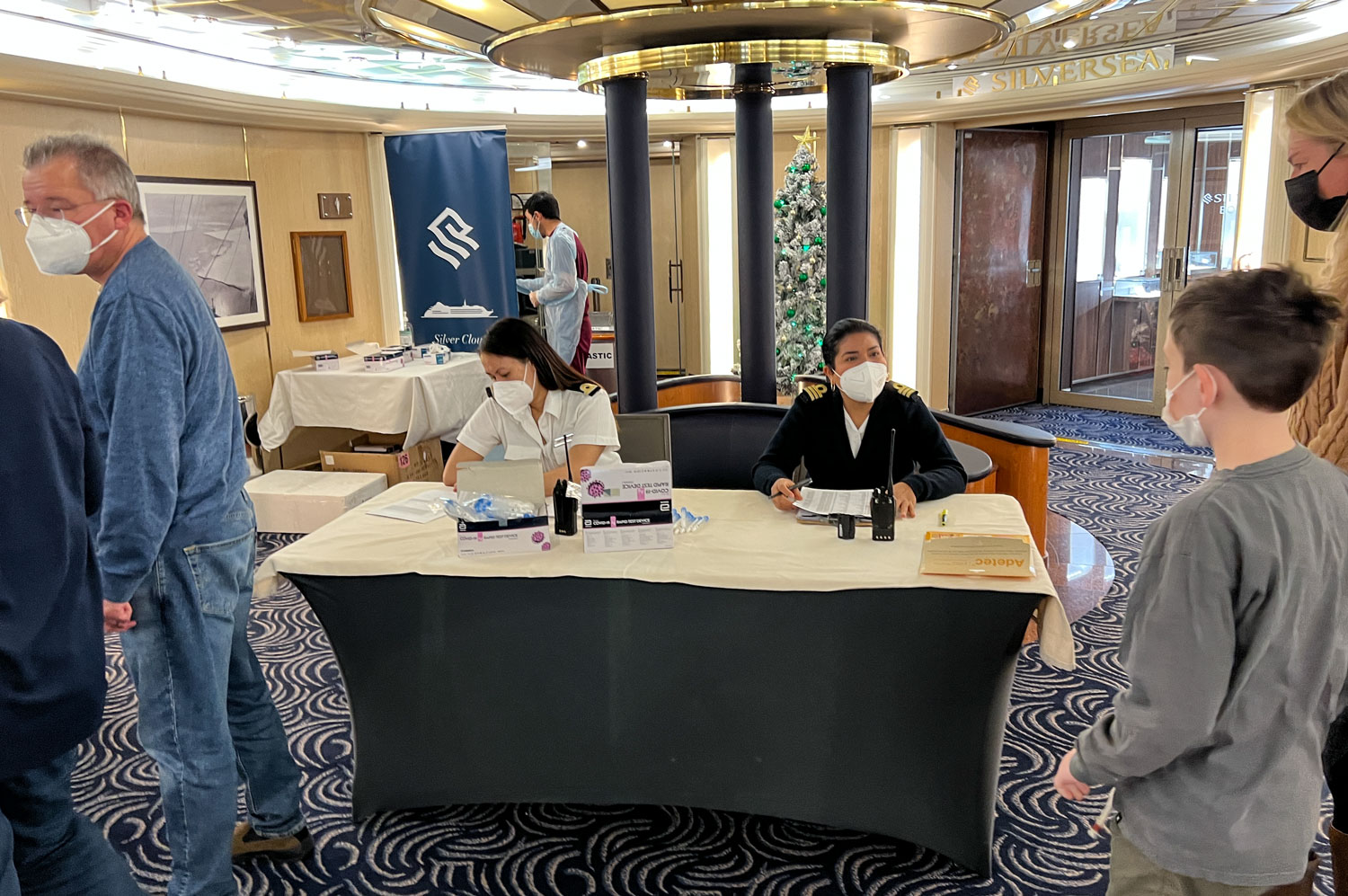
The polar plunge was done today before lunch. I was up on the 8th deck so I was looking down on the jumpers. I did continuous shooting for a few of the jumpers. Here are a few of the pictures I took.
The water temperature is -1˚C, or about 30˚F.

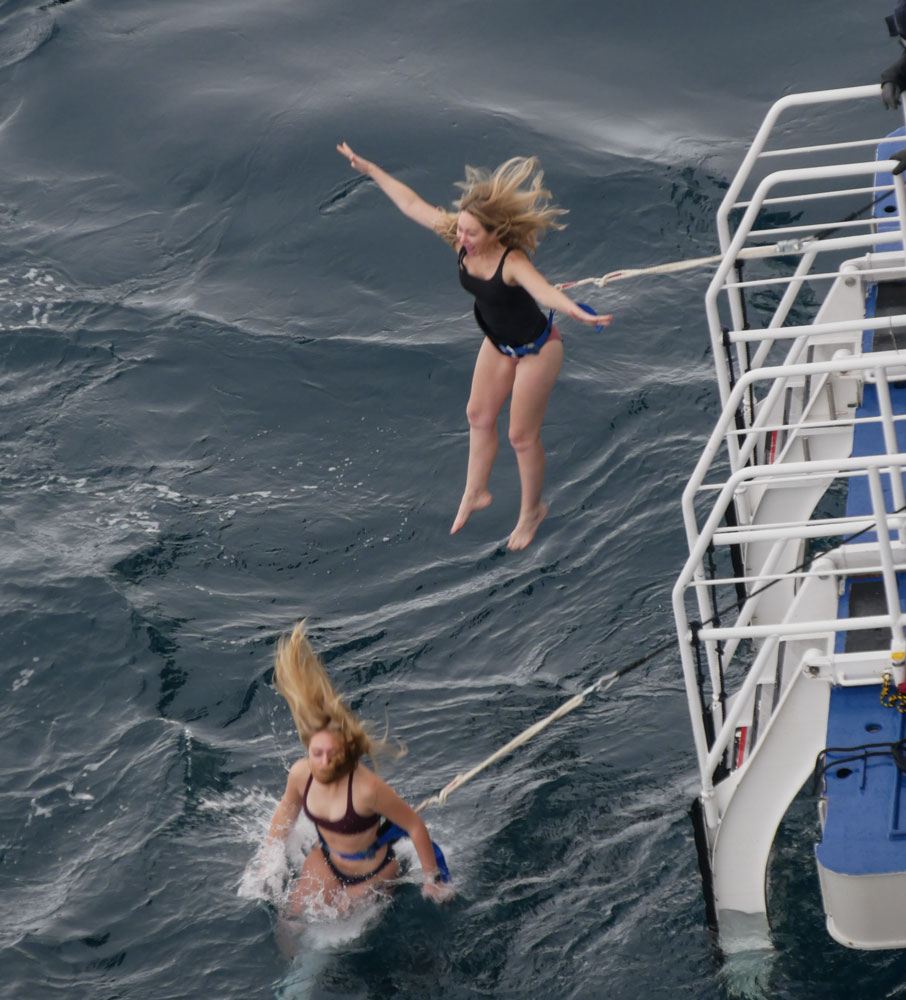
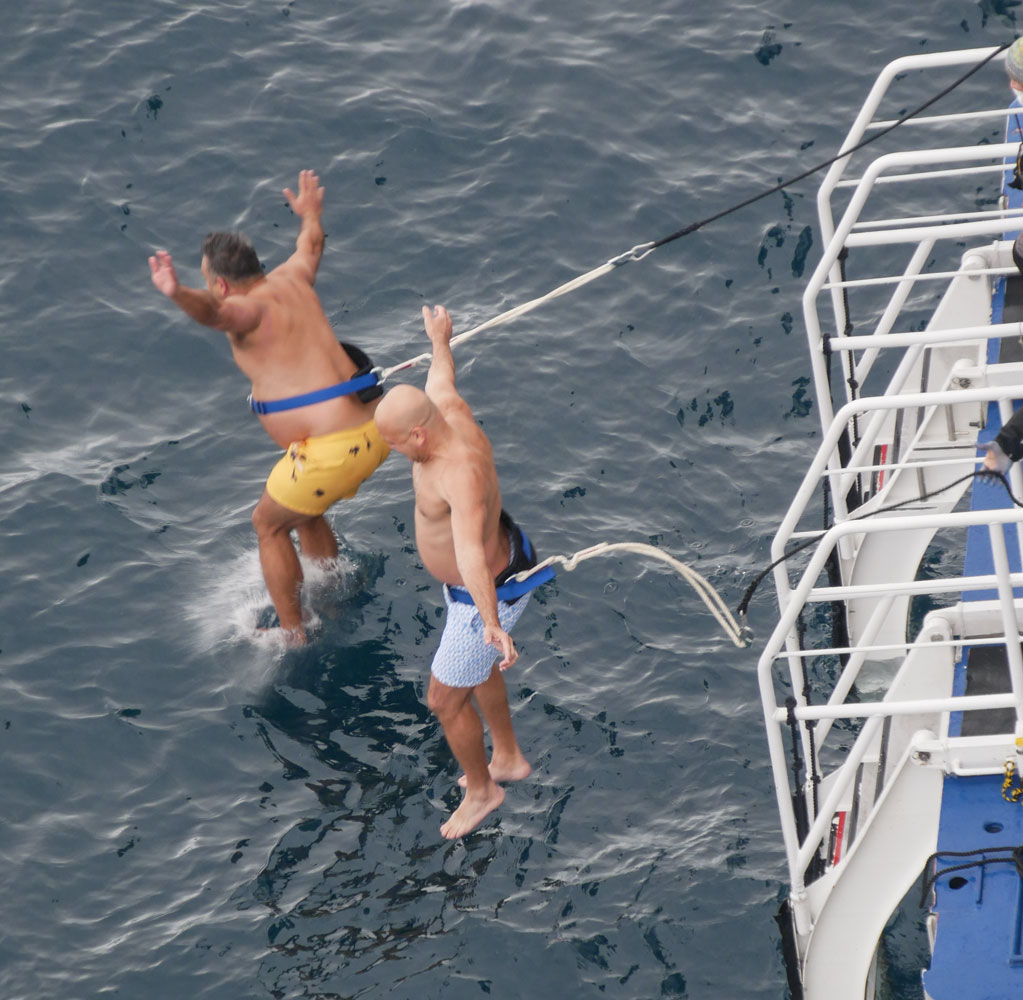
After the Polar Plunge, the ship moved to Enterprise Island. We'll have a zodiac excursion in this area - no landing.
We were moved to a late departure by zodiac - about 5pm - which means we don't get back to the ship until after 6pm. Our excursion took us on a tour of the bay where we're anchored. One advantage of the late start was that the weather had cleared and we had some bright sunshine.
A striking aspect of this area is the amount of accumulated snow.

As we headed out, we stopped first at a rocky outcrop where some penguins were resting. We were told that the penguins do not nest here - they just stop to rest.
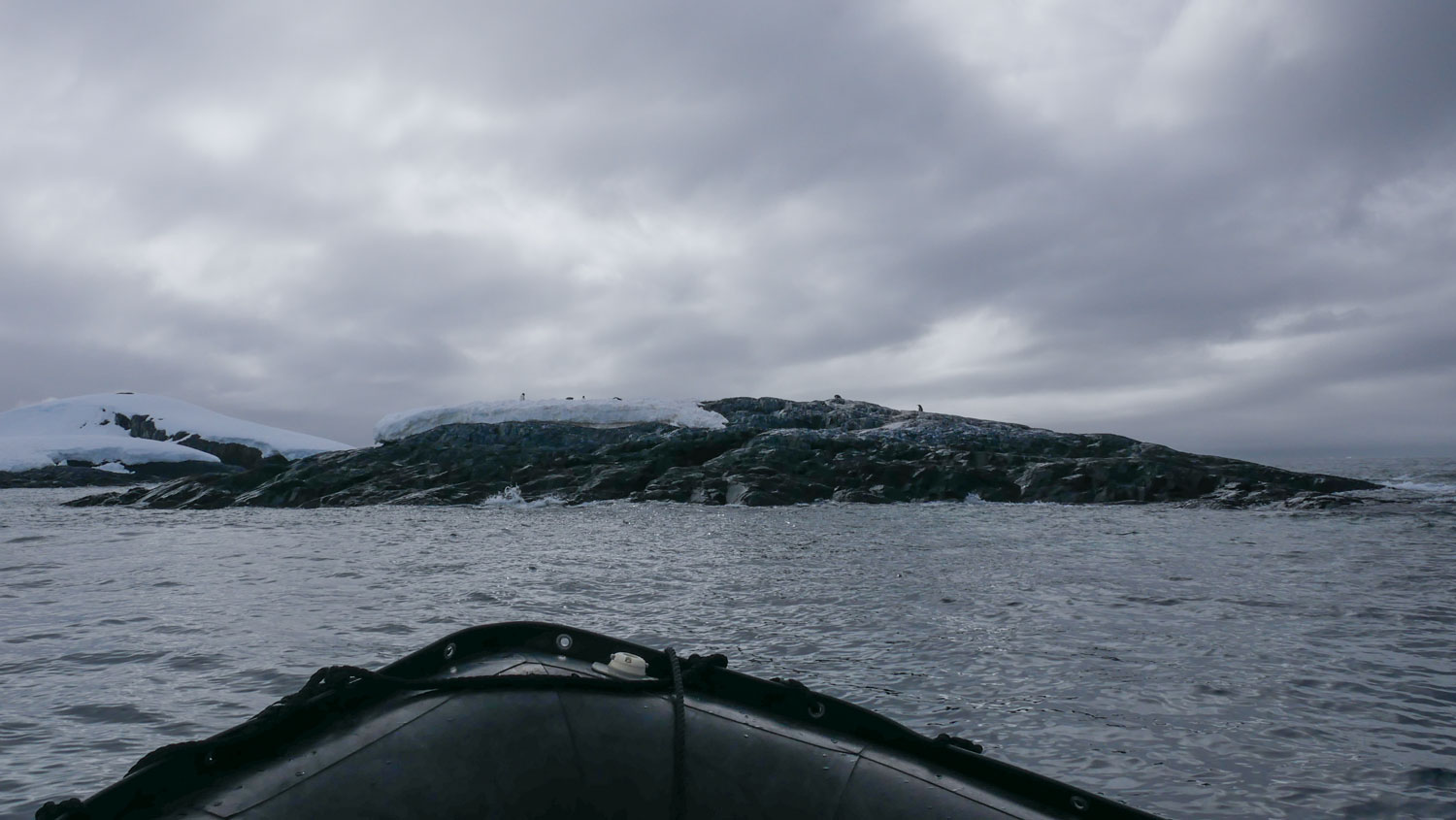
Here's a Gentoo penguin on the snow. Gentoos have a white bonnet across the top of their heads and an orange bill.

Some more penguins on the outcrop. Three of them are Gentoos and three are Chinstrap. They can hang out together, but they don't interbreed.

There are three Chinstrap Penguins in this picture, with one Gentoo. Also some penguin guano.
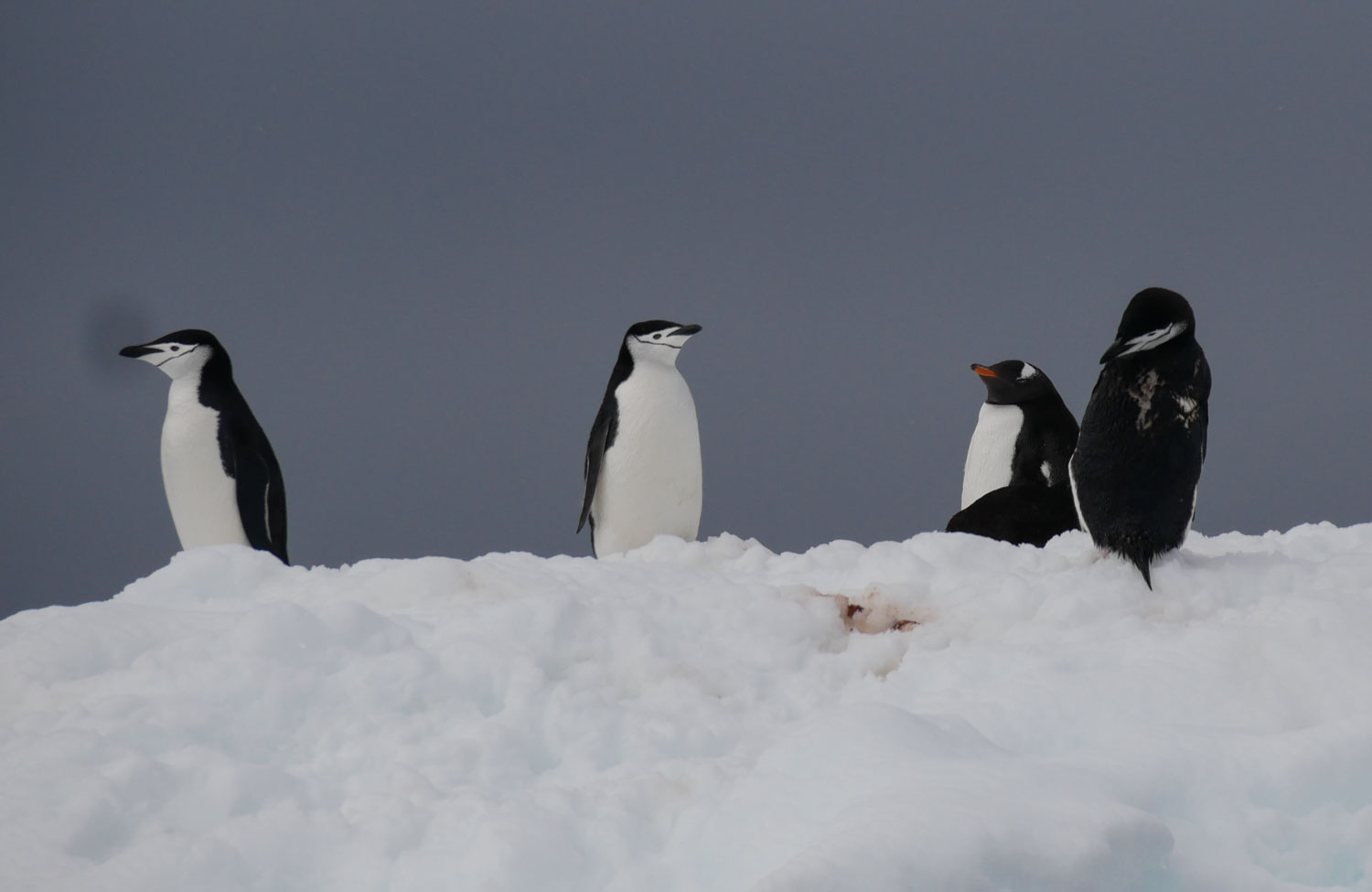
A small iceberg with an arch. Many of the icebergs have a bluish tint because the redder portion of the light is absorbed by the ice and snow and the blue is scattered. Here's an explanation.

There is a lot of snow and ice accumulated on Antarctica.
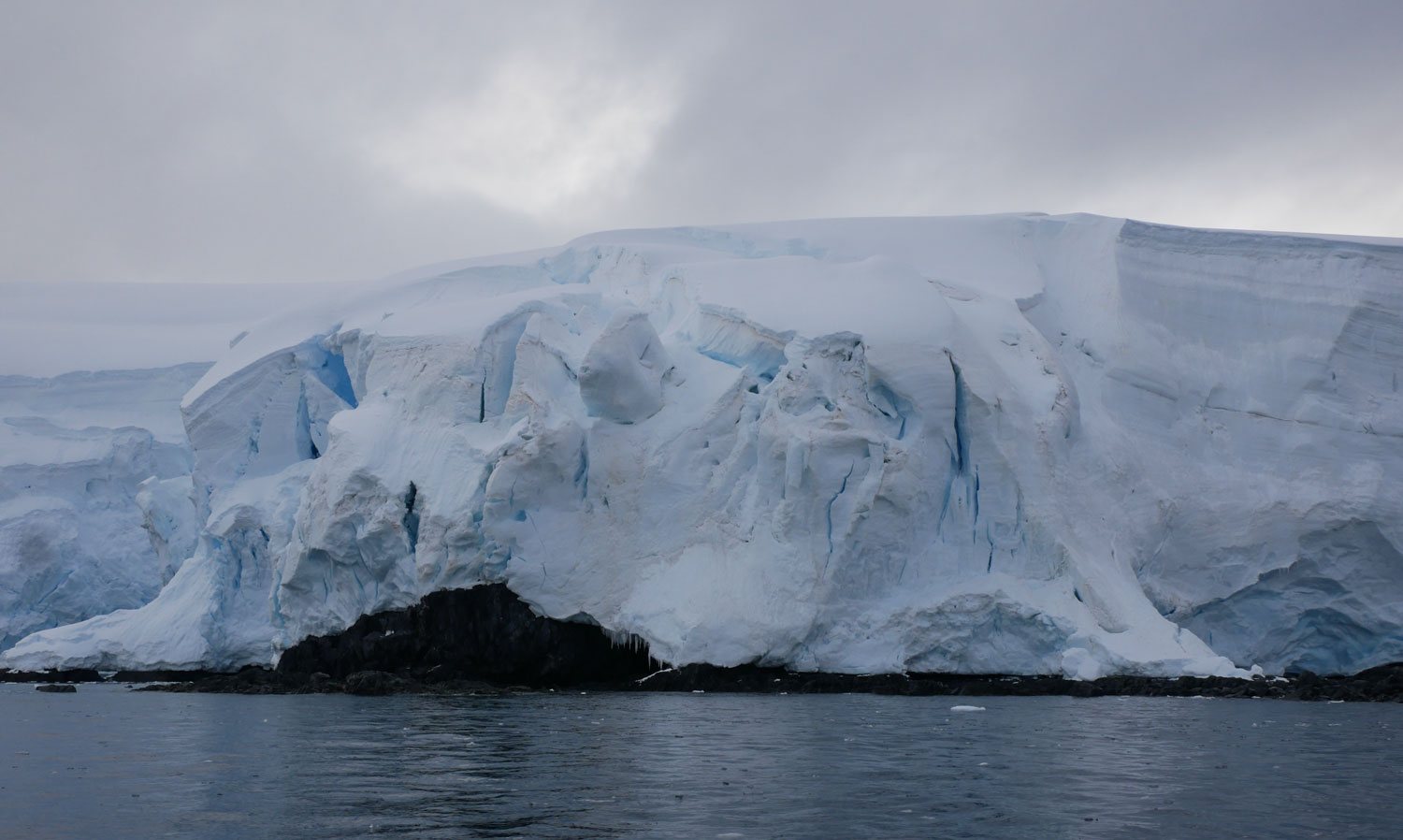
Cracks develop in the snowpack and can be covered later by more snow. They're called a crevasse, and they're very dangerous to people who travel across the surface. If someone fell into a crevasse, it would be very difficult to get them out alive.
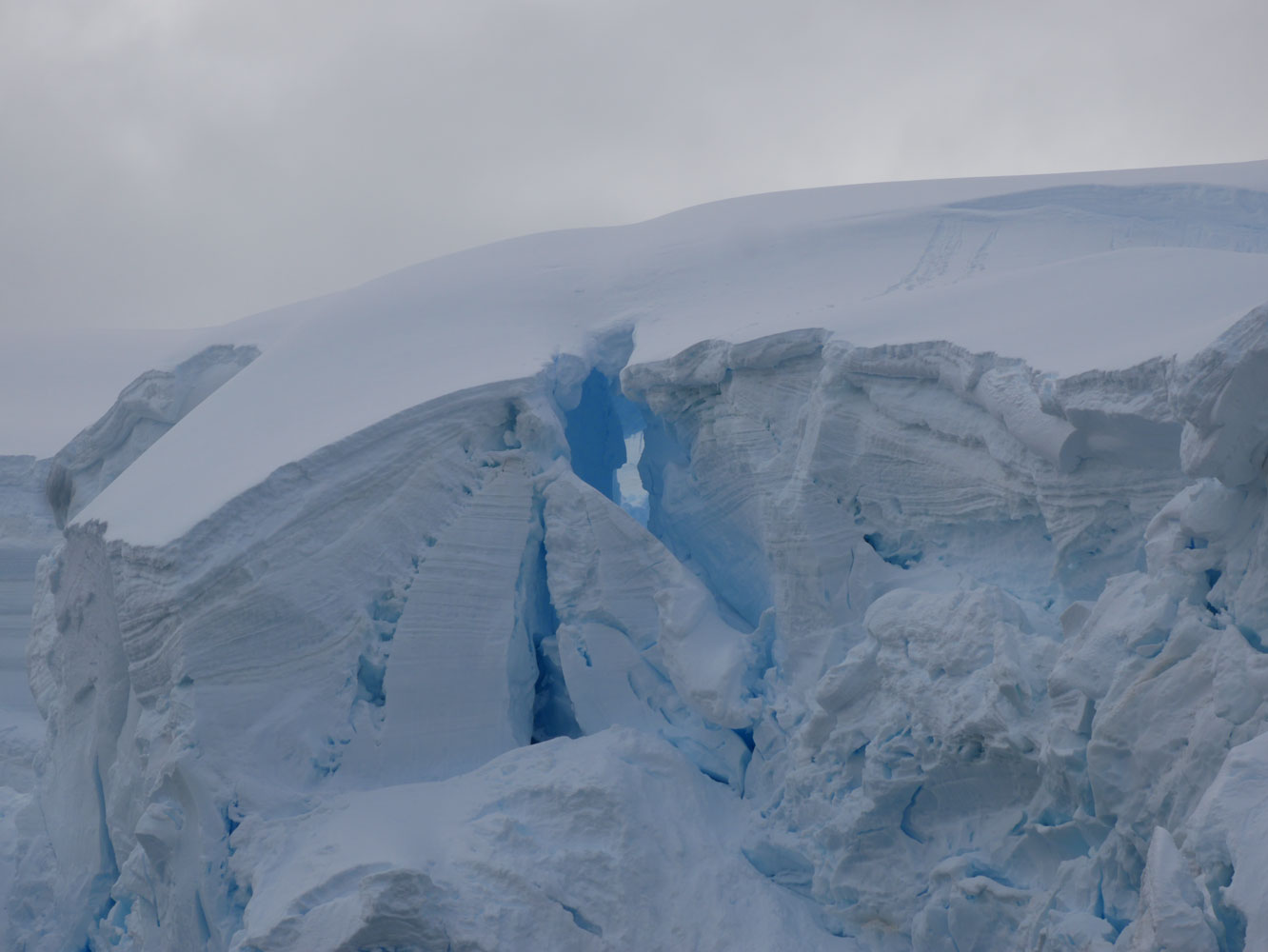
I include this picture with the zodiac to show scale. The snow accumulated in the background is not nearly as high as some we had seen earlier.

Then we came upon the wreck of the Governoren. The Governoren was a whaling ship that worked the Antarctic waters in the early 1900's. In 1915, it was loaded with whale oil, ready to return to Norway, when it caught fire. The captain chose to beach the ship in order to save the crew.
Other whaling ships in the area saw the fire and came to the rescue. The entire crew of 85 was saved.
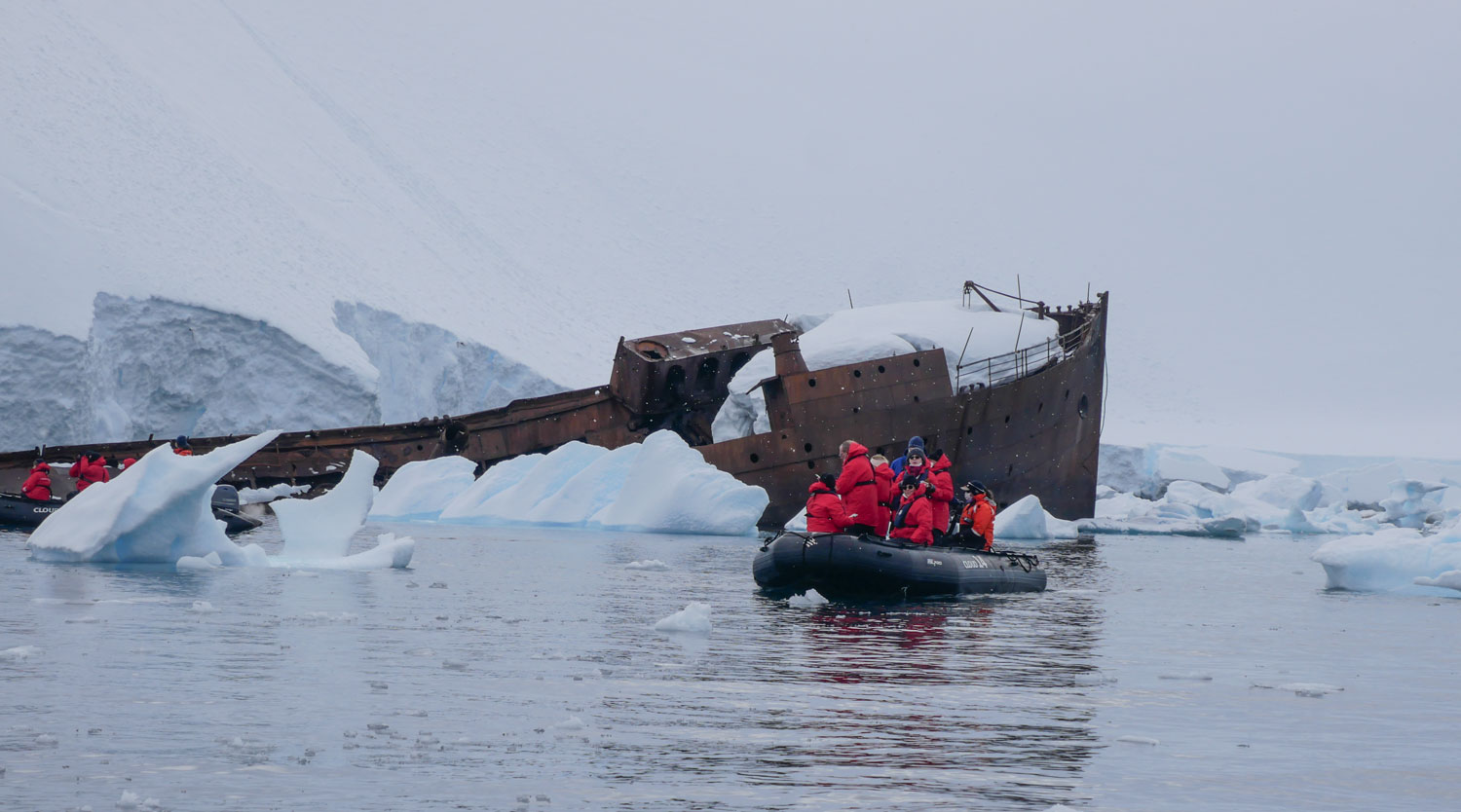
Another view of the Governoren. I'm amazed that it's lasted over 100 years.
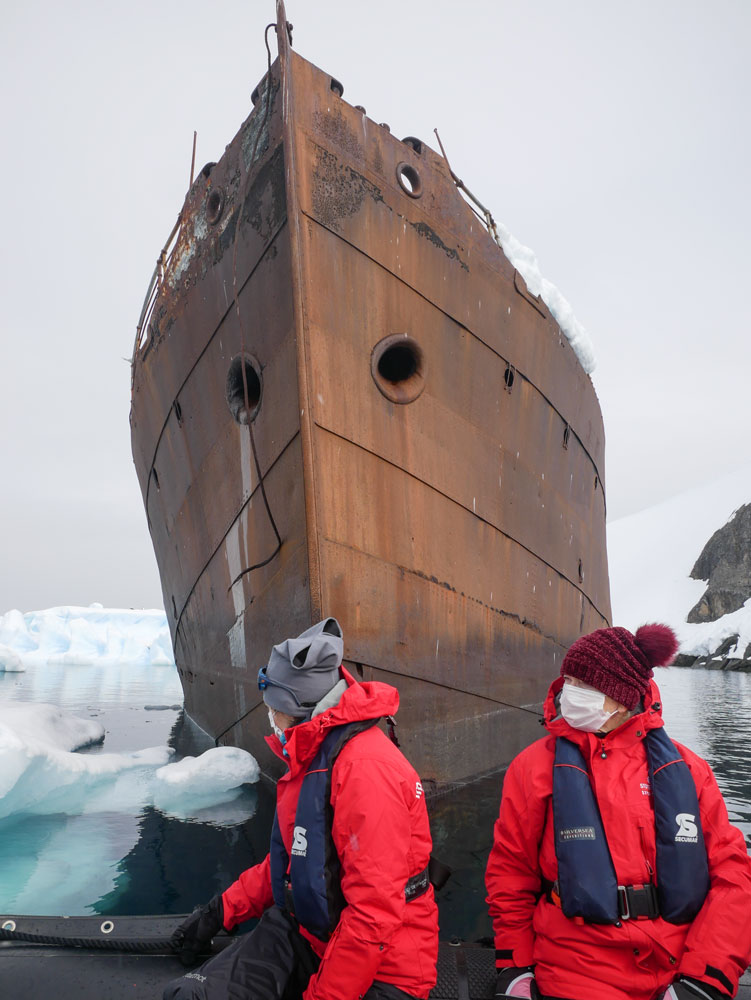
The zodiacs are numbered, and as we headed back to the ship, I got a shot of this one. Everyone wants to be on Cloud 09.
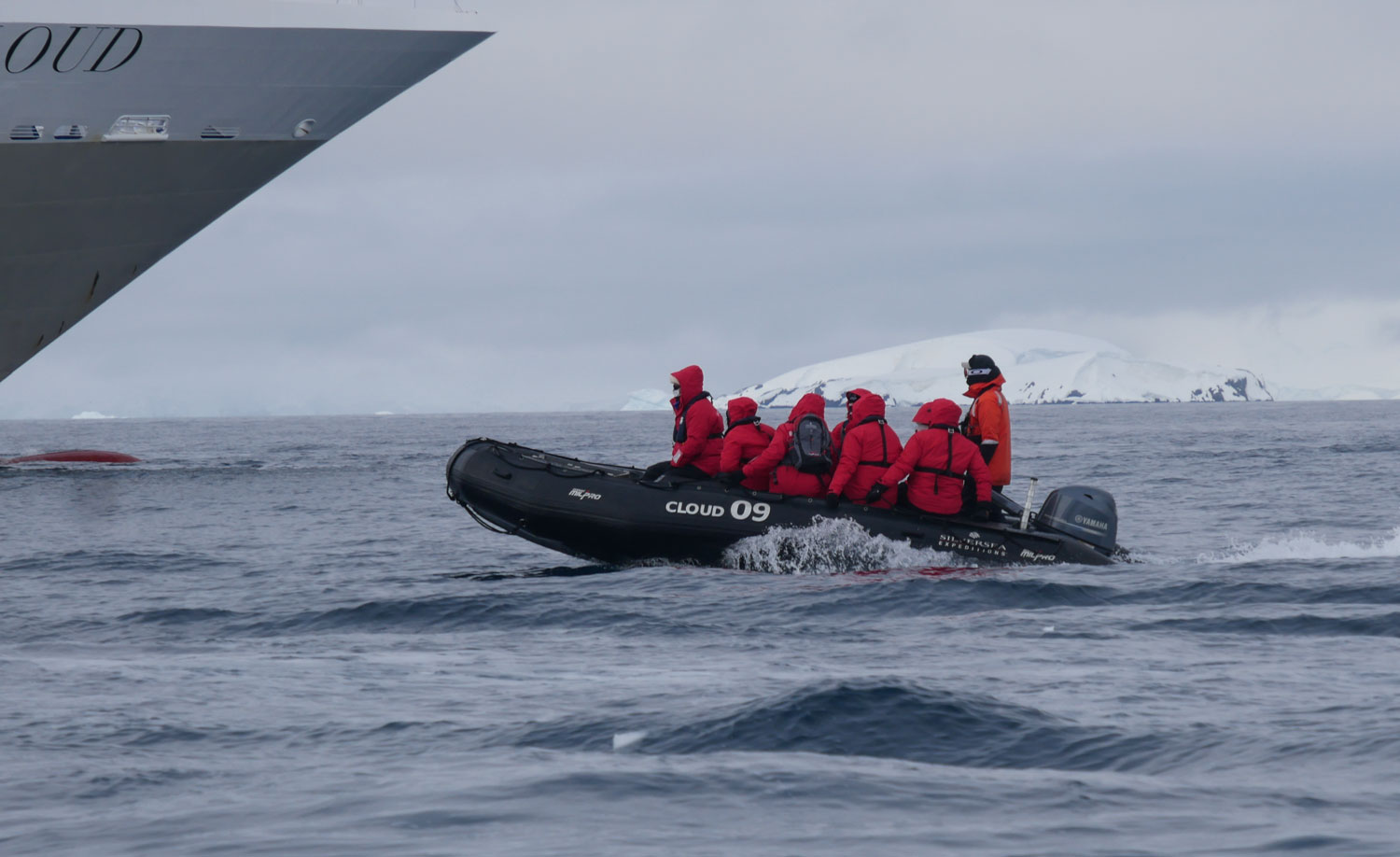
We reboarded the ship a bit after 6pm and attended the daily briefing at 6:45.
Dinner was made more lively by several whale sightings. For one sighting, I took a few pictures. You don't see much of the whales since they're under water but here's what we could see. They tend to feed at dawn and dusk, when the krill and squid are more easily available. There were two humpbacks. I took many pictures, but I have to limit how many I put on here.


After dinner, we went to bed.
+++++++++++++++++++++++++++++++++++++++++++++++++++++++
12/27/2021 (Monday) Orne Harbor, Antarctic Peninsula. Location at 6am, 64˚31.5'S, 62˚21'W, light snow, 0˚C, sea is calm.
Our morning excursion is another zodiac tour, but the afternoon excursion will be an opportunity to set foot on the mainland of Antarctica. (As determined by weather conditions, that actually happened the next day. ) Up to now, we've only done excursions on islands that lie off the Antarctica Peninsula. The islands are part of the continent of Antarctica but are not the mainland.
Our morning group departs at 9am today, which is a good "in-between" time. It gives us time for breakfast and time for me to post pictures before lunch and the afternoon excursion.
We started the morning excursion by visiting a group of penguins.
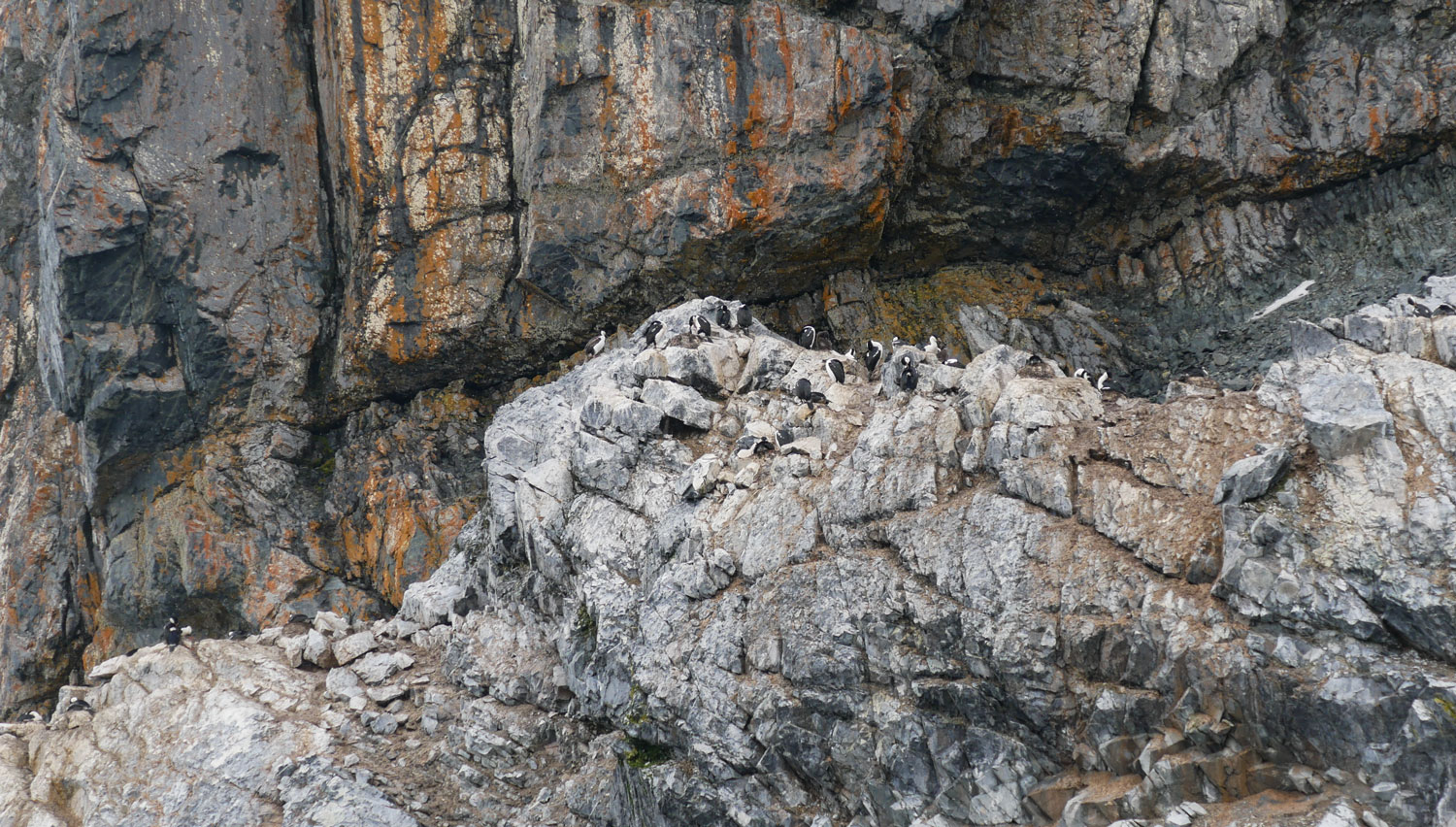
Here are some pictures of the penguins, probably more penguins that you want. Here we have two Gentoos and one Chinstrap.
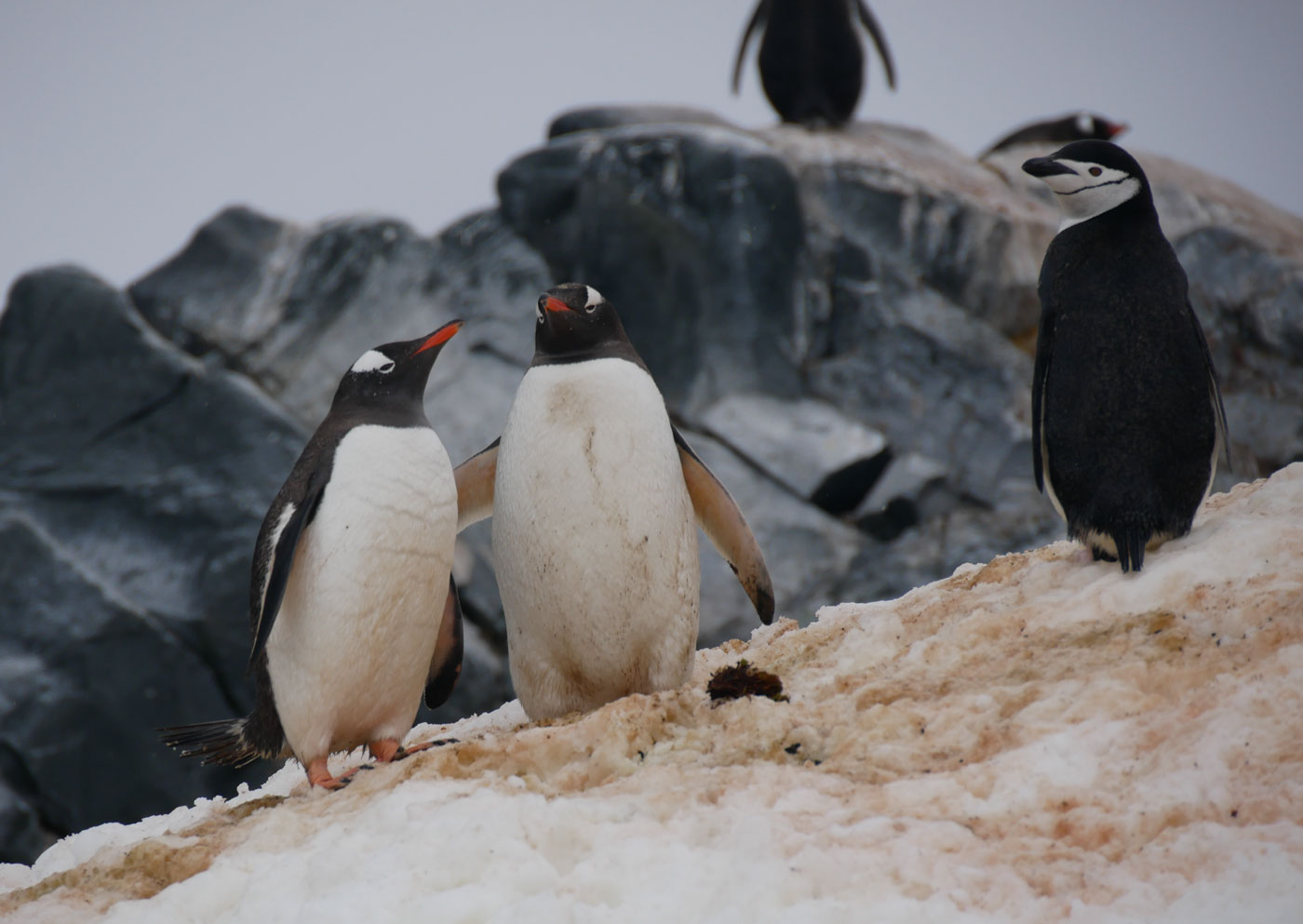
Three Gentoos.
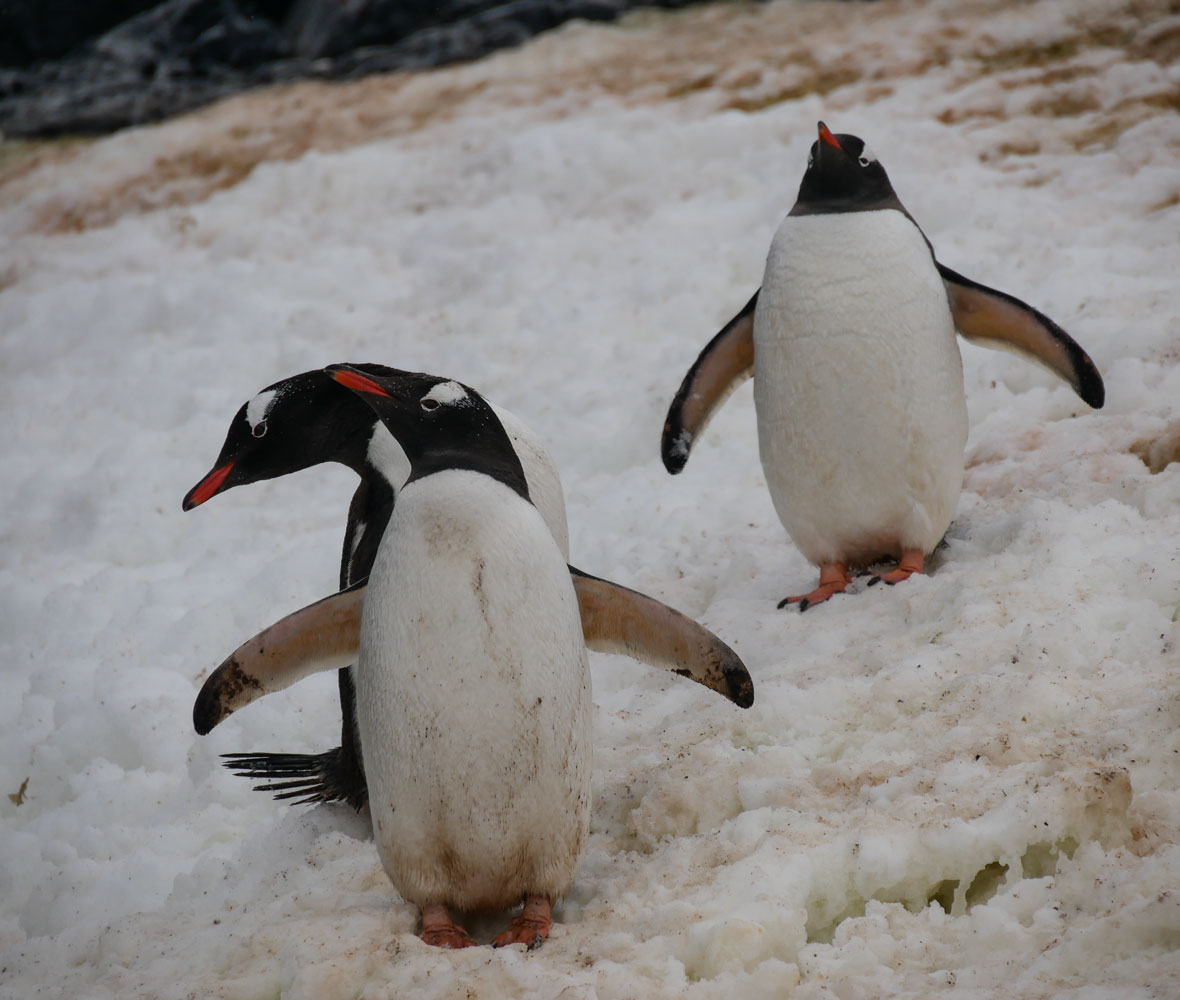
A Chinstrap.

Another chinstrap, this one fairly clean.

Here's a picture of terrain around the bay that we're on. Pictures just cannot show how massive this is. The size of the mountains and the amount of snow are overwhelming. You really have to see it in person. I just cannot do it justice with the pictures.
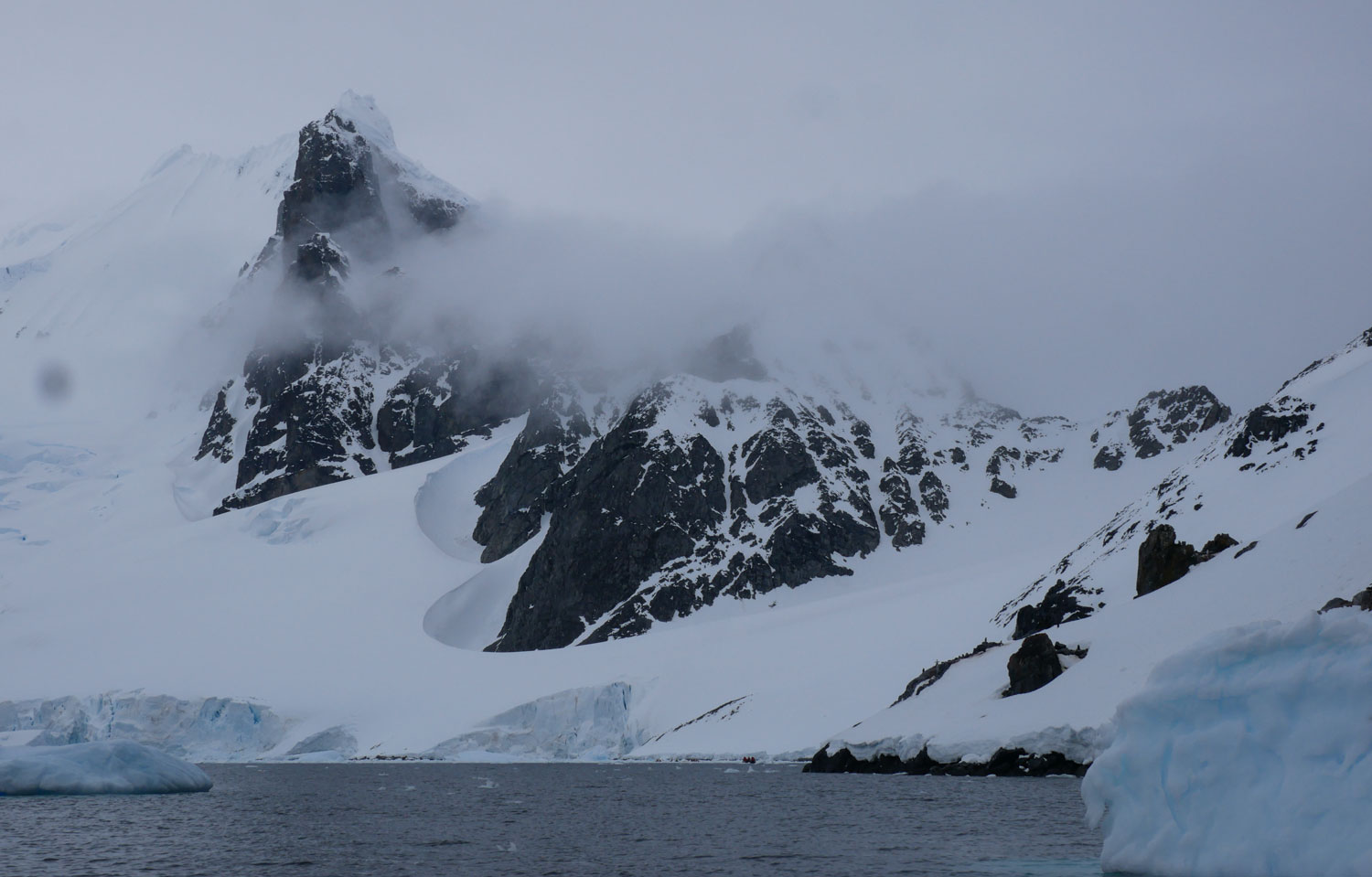
A few more penguin pictures. Here are some Chinstrap Penguins nesting.
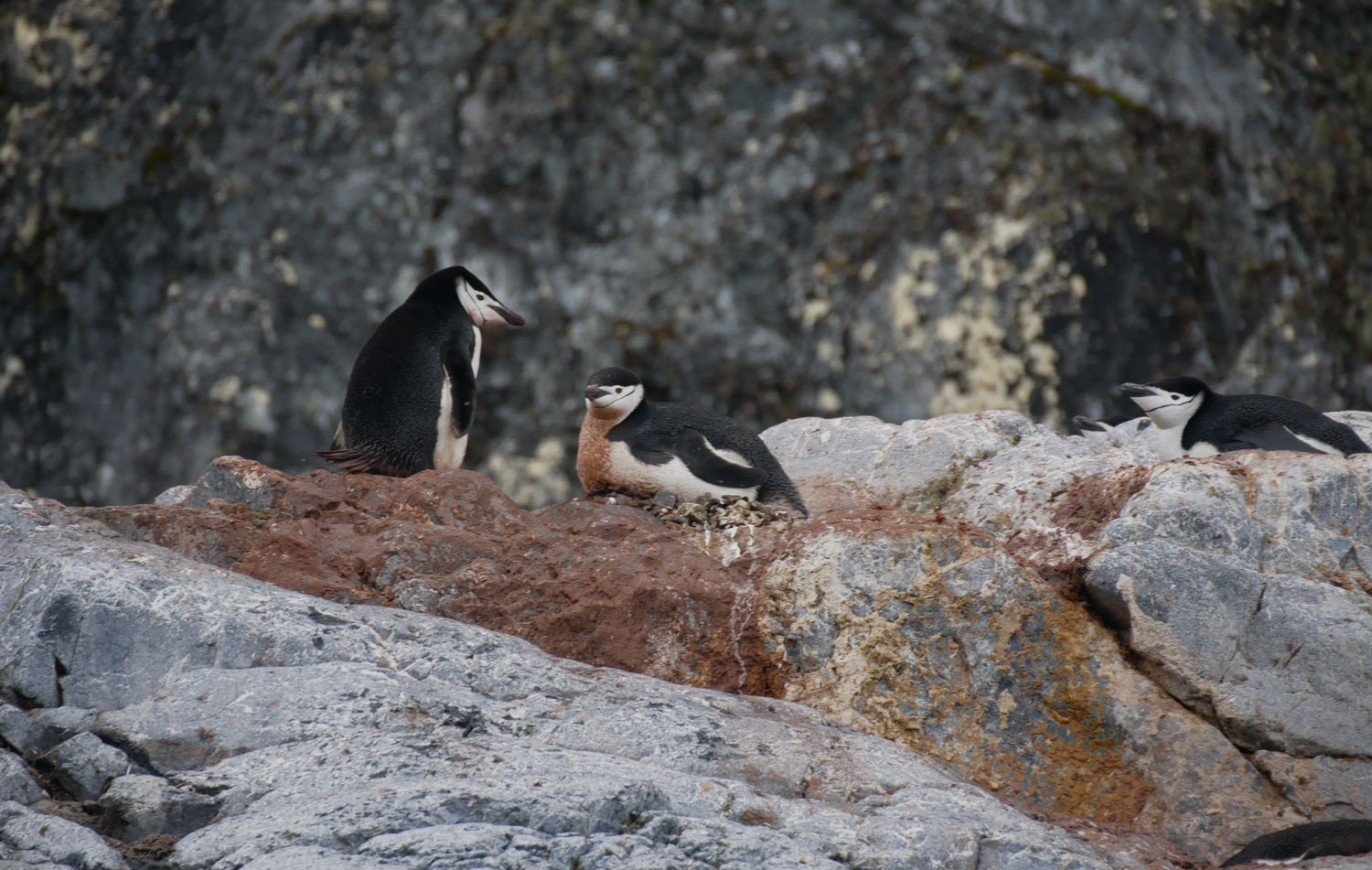
A penguin (probably a male) carrying a pebble to add to the nest. Chinstrap Penguins have to sit the eggs about 37 days. The male and the female take turns sitting the eggs, about 6 days at a time.
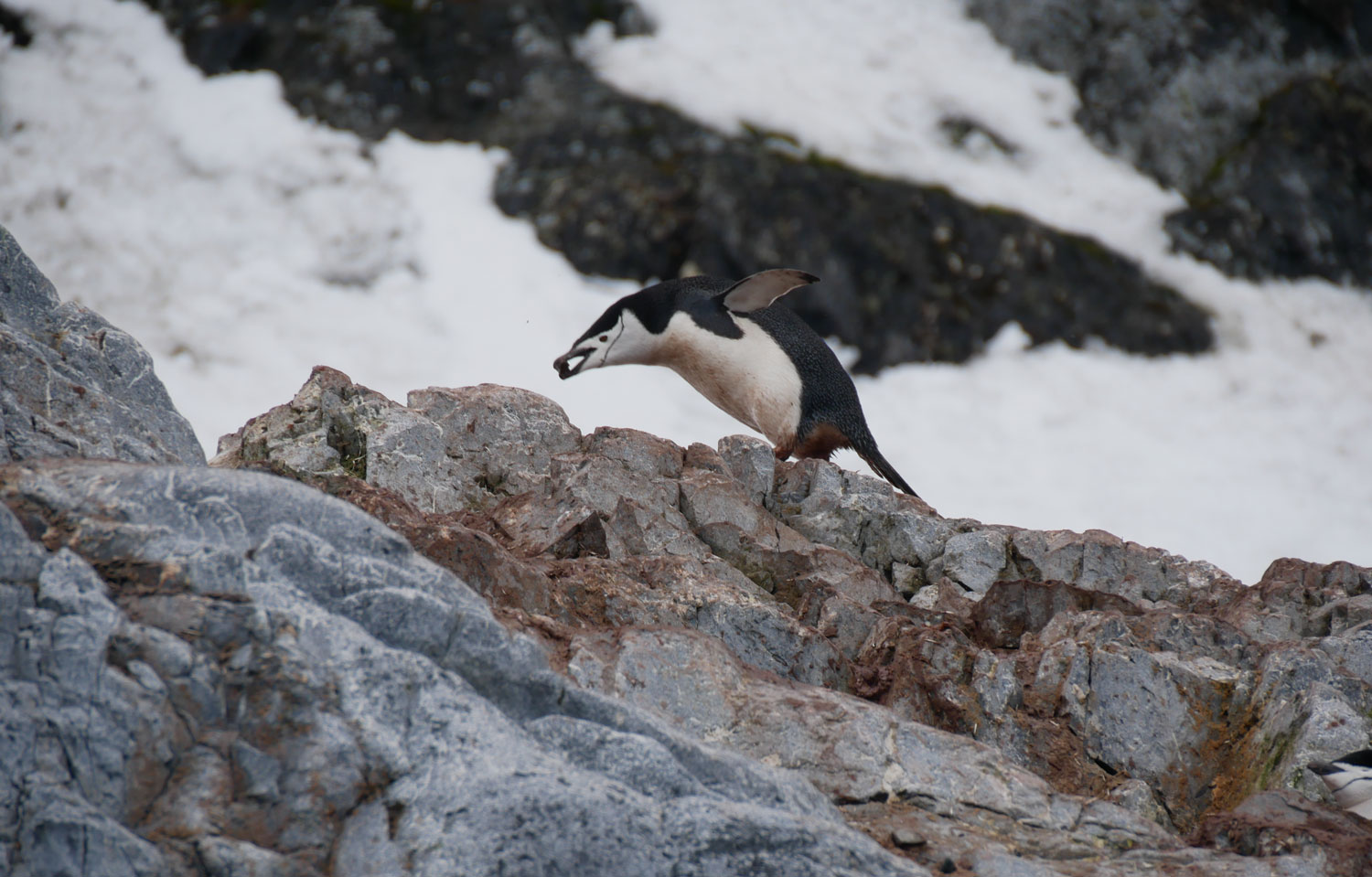
A Weddell Seal resting on the snow.
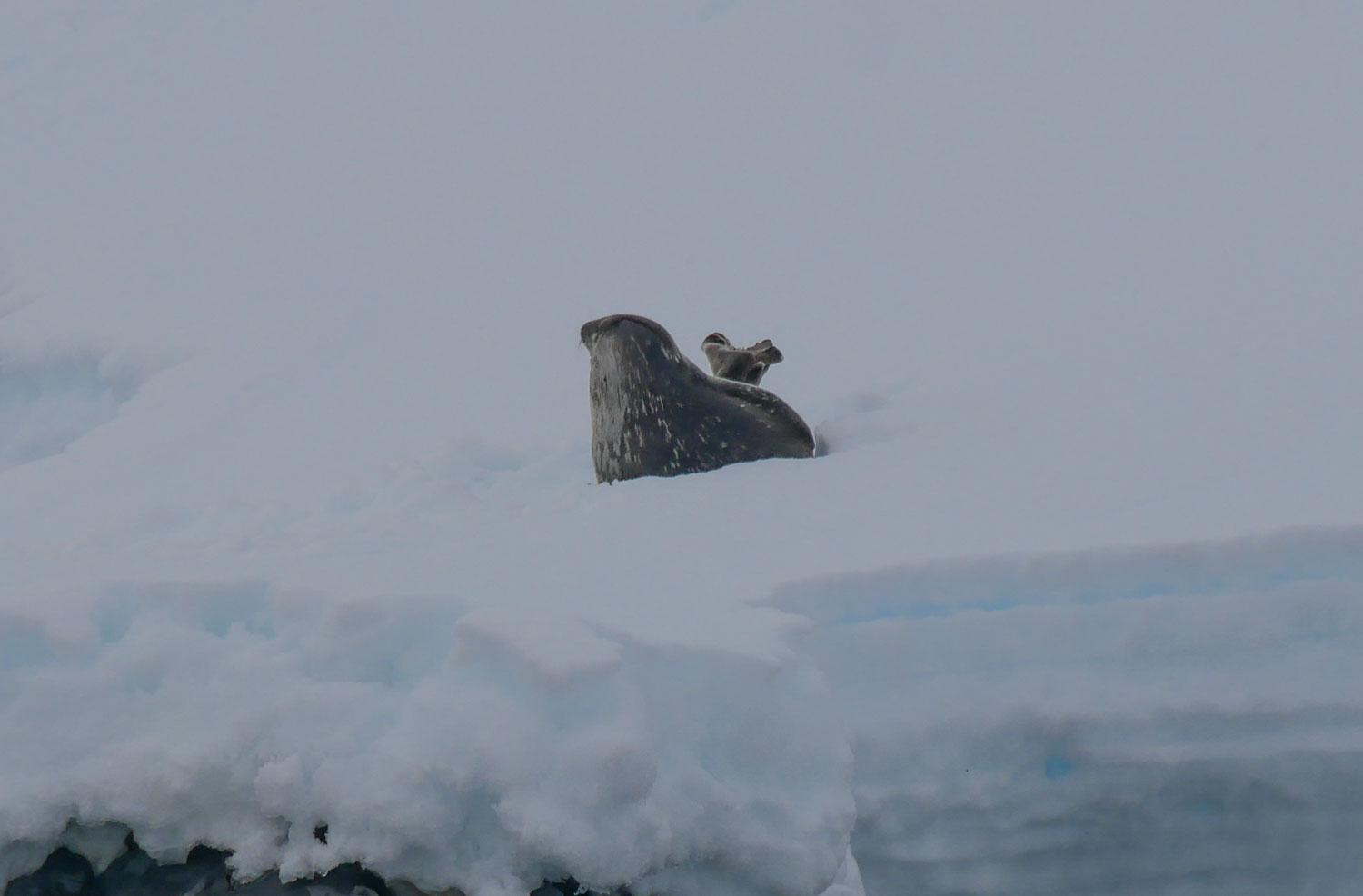
Another picture of the terrain around the bay. The zodiac spent some time taking us through the heavy shore-line sea ice called "brash ice", and the driver once killed the engine so we could hear the sounds of the ice crunching and sloshing. It was magical, but comforting to know that we were in a dependable zodiac with a comfortable ship nearby.
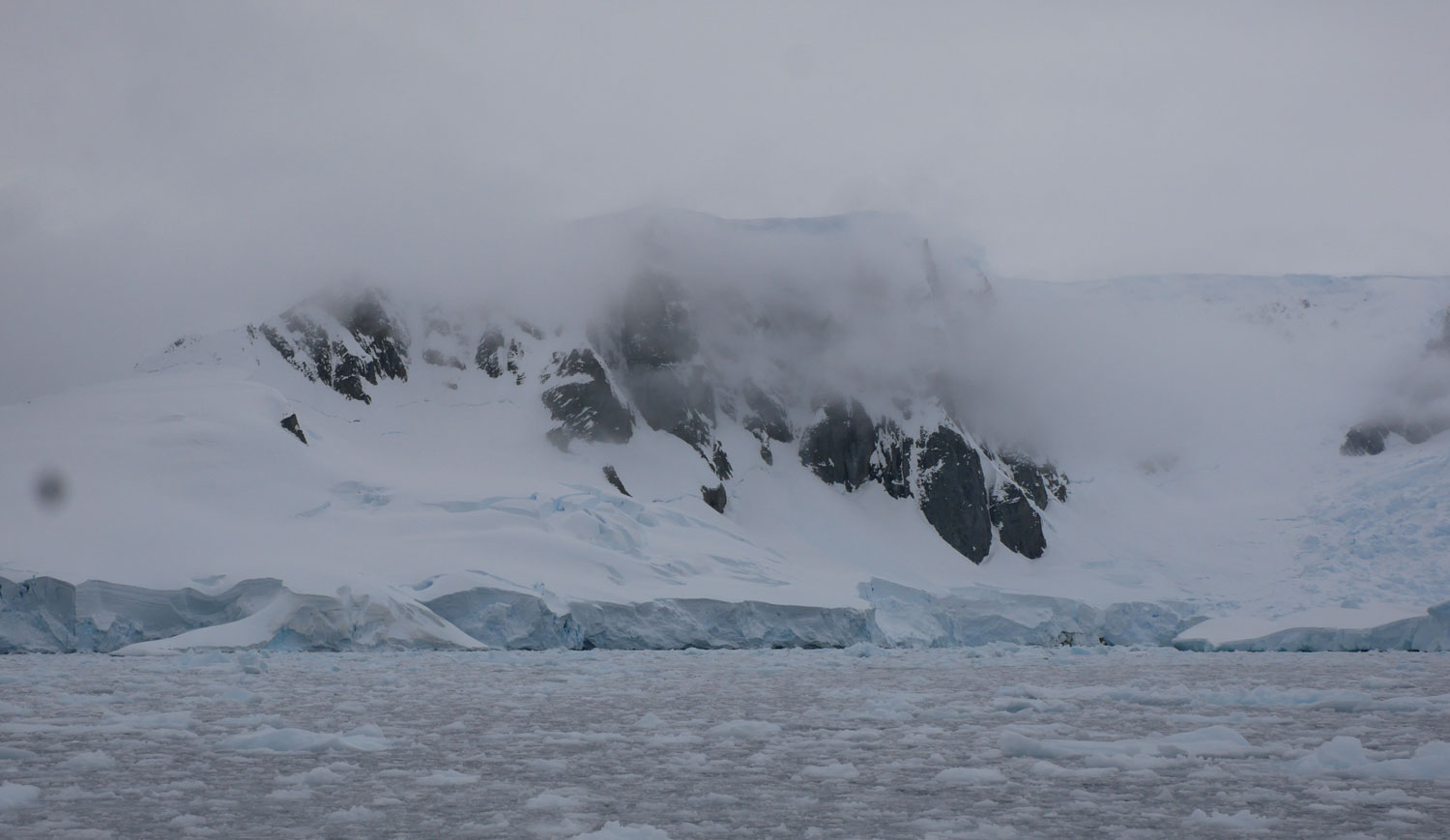
Finally, here's a picture of Judy, and one she took of me, as we were returning to the ship.
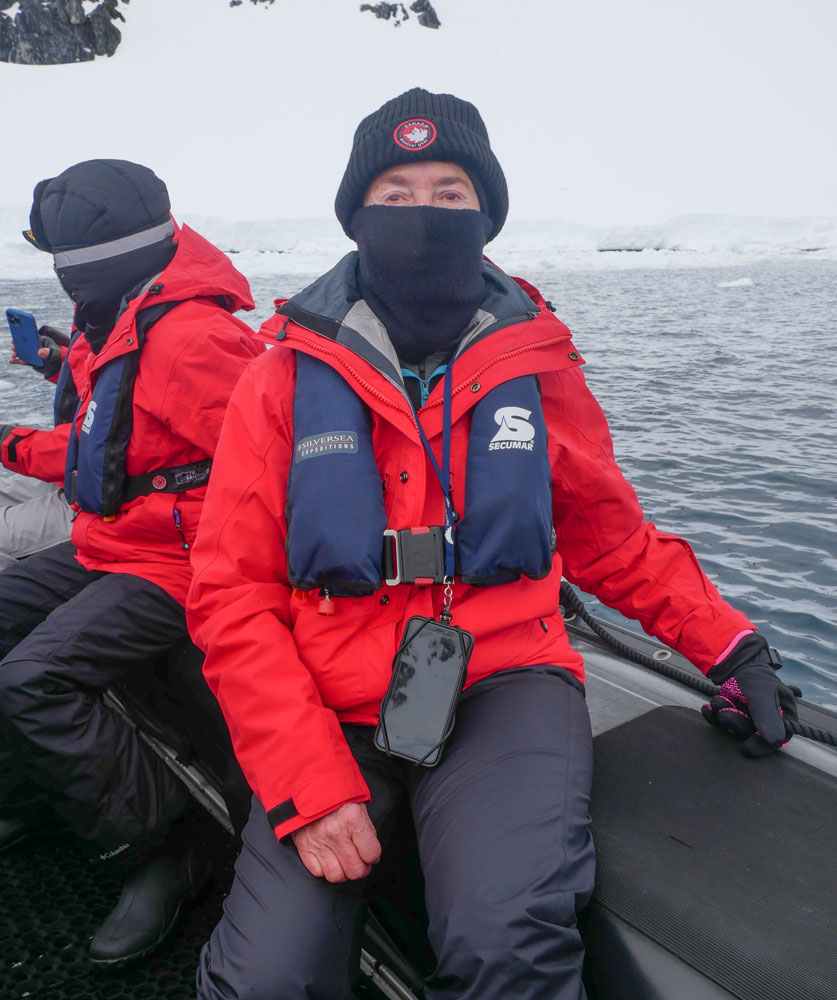
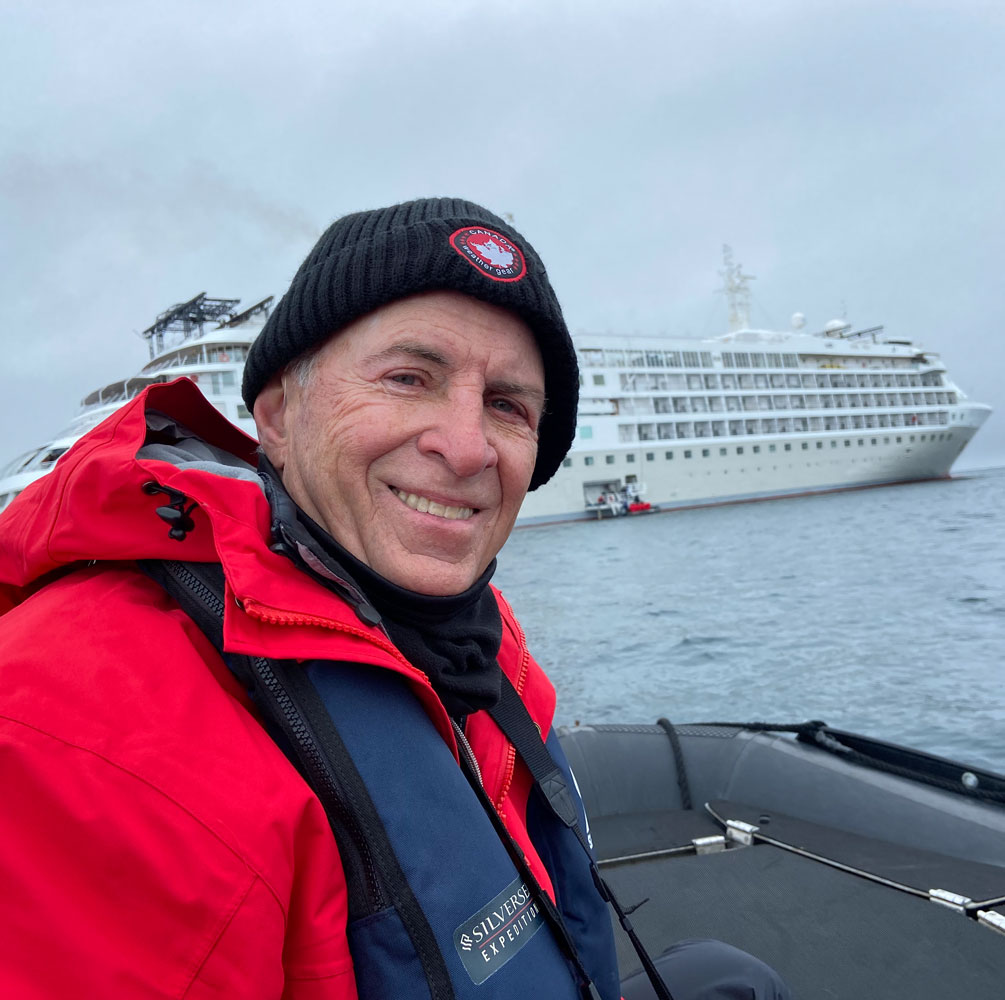
In the afternoon, we went to Danco Island. We were in a late group so we didn't board the zodiacs until about 5pm.
The expedition staff had prepared a landing area for us. They had cut steps in the snow to allow us to get on the main snow pack.

Janet and Judy arriving on the Island. It turned out that we were overdressed for the weather and activity. We were hot in the clothes.

There were many Gentoo Penguins in the area, and they had cut their own "steps" to gain access to the snow pack. This is called a penguin highway.

Shortly after we arrived, a large group of penguins came out of the water and marched single-file across the beach to the penguin steps.

From the penguin steps, they marched to the top of the hill. They were very orderly.

Here's Judy following the example of the penguins and coming up the human steps. I always worry about her. Judy had two hip replacements - if she fell and broke one, we'd be in trouble here in Antarctica.

A view of the icebergs from the hill, with penguins dotted here and there.
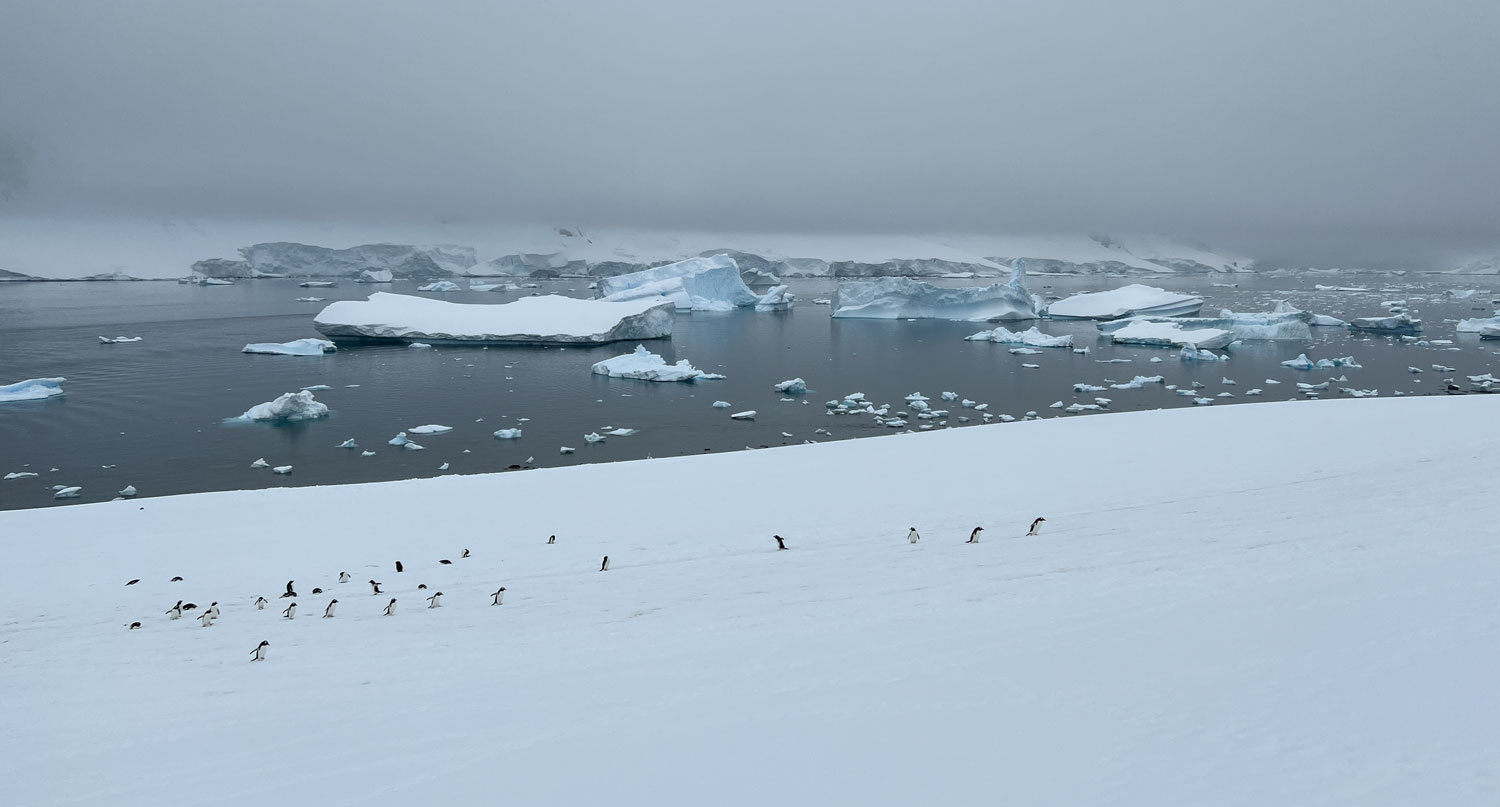
Climbing the hill in the snow was difficult. It was easy to slip and fall. After a while, we descended. Here's Judy on the walk down. You can see another group, who arrived later, going up the hill.
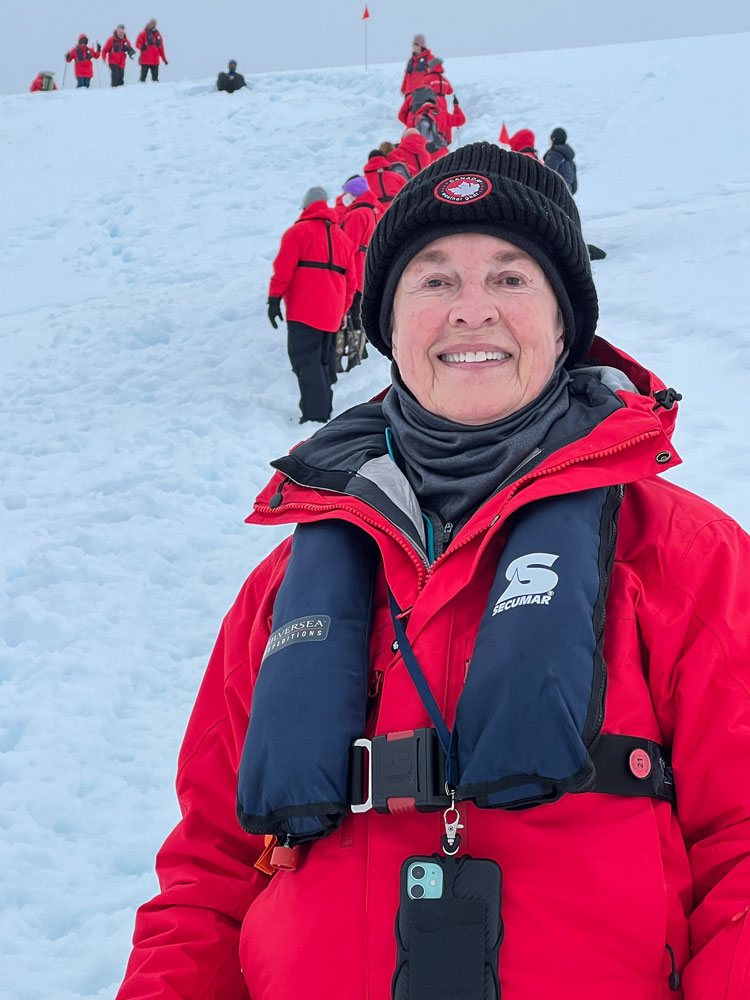
As I was coming down, a woman was coming up and she stepped off the packed area of the snow. Her foot went into the snow up to her knee, or deeper. I offered her a hand to help her up but her foot was stuck and she couldn't pull it out. It took some time for us to dig away enough snow for her to get her leg out. Having insulated boots and waterproof pants can be important.
While waiting for a zodiac to go back to the ship, I took some pictures of a group of Gentoo Penguins on the beach. I think they wanted to get by us to get to the penguin steps but were afraid to pass by.
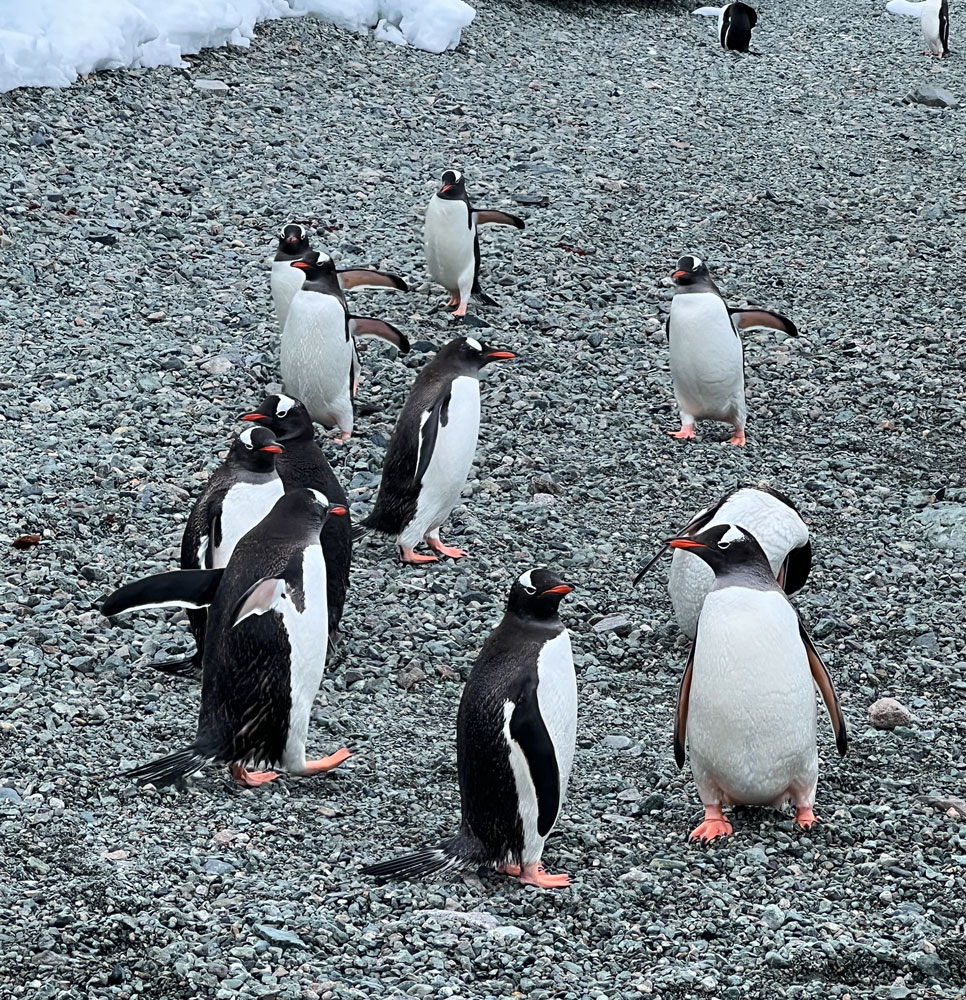
A closer view of a few of the penguins. They have a prominent tail, and are called "rump-tailed" penguins.

This little guy was a bit bolder than the others and came right up to me. But even he eventually turned back to wait until we left. He had just come out of the water so he was nice and clean.
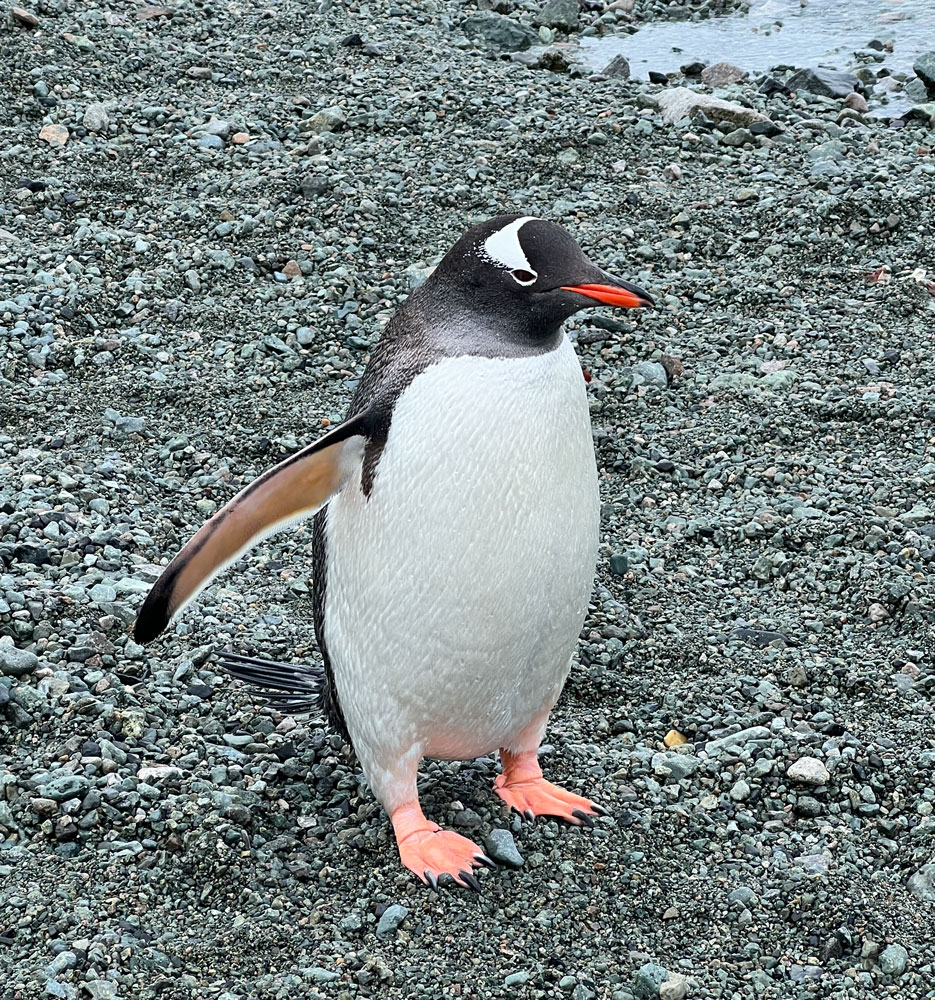
Later in the day, I went to the top deck of the ship and took this picture of the area where we're anchored. Look at all the icebergs. They don't look very large in the picture but they are huge.
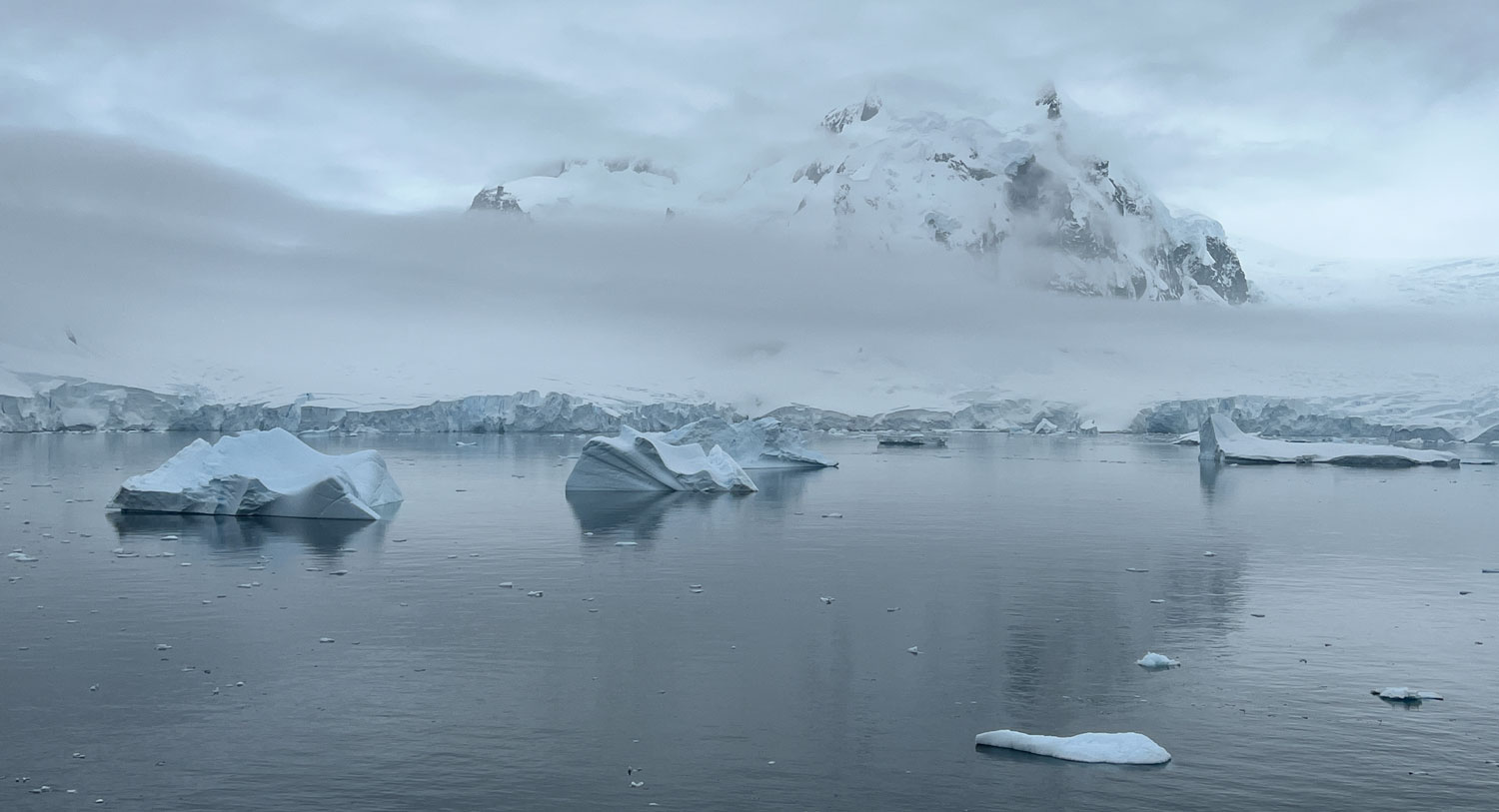
A closer view of the iceberg at the left in the previous picture.

This was an unusual iceberg. An iceberg with a "hot tub". Of course, "hot" is relative.

Just to close off the day, here's Judy with an iceberg.

Later that evening we saw a giant iceberg as we were sailing along. But the interesting thing was a smaller iceberg that was next to the big iceberg - there were a whole bunch of penguins on it. I immediately thought of The Raft of the Medusa.

That was the end of our day.
+++++++++++++++++++++++++++++++++++++++++++++++++++++++++++
12/28/2021 (Tuesday) Leith Cove, Antarctic Peninsula. Location at 6am, 64˚49'S, 63˚3.5'W, 0˚C, calm sea.
Today's excursion has us landing on the mainland. As I understand it, that's the main reason for the excursion. There's no wildlife at this site, but interesting views. We were told that the walk would be in deep snow and it could be icy, so I chose not to bring my camera - to just use my iPhone.
Our group was called about 8am. The zodiac ride to the landing site was a bit rough and I didn't take any pictures as we arrived. A nice thing about this landing was that we did not have to step into the water - it was a dry landing.
The expedition team had cut steps for us in the snow - it must have been a lot of work for them to shovel all that snow and pack it down.
Here's Judy starting up the steps. You can see how many steps the team had to cut - and there were more beyond what you can see in this picture. (Note: I have to leave some of these pictures a bit blue in order to show the detail in the snow. If I color correct all the way to white, the detail disappears. In this next picture, if I correct to white, the steps essentially disappear.)

Judy and me at the top of the hill, with a navigation marker behind us.

The three of us, Judy, me, and Janet, at the bottom of the world (well, almost).

A view from the top of the hill.

The view in the other direction. The excursion crew has red flag markers placed to keep us from going too far afield. They do a lot of prep work before our early landings.
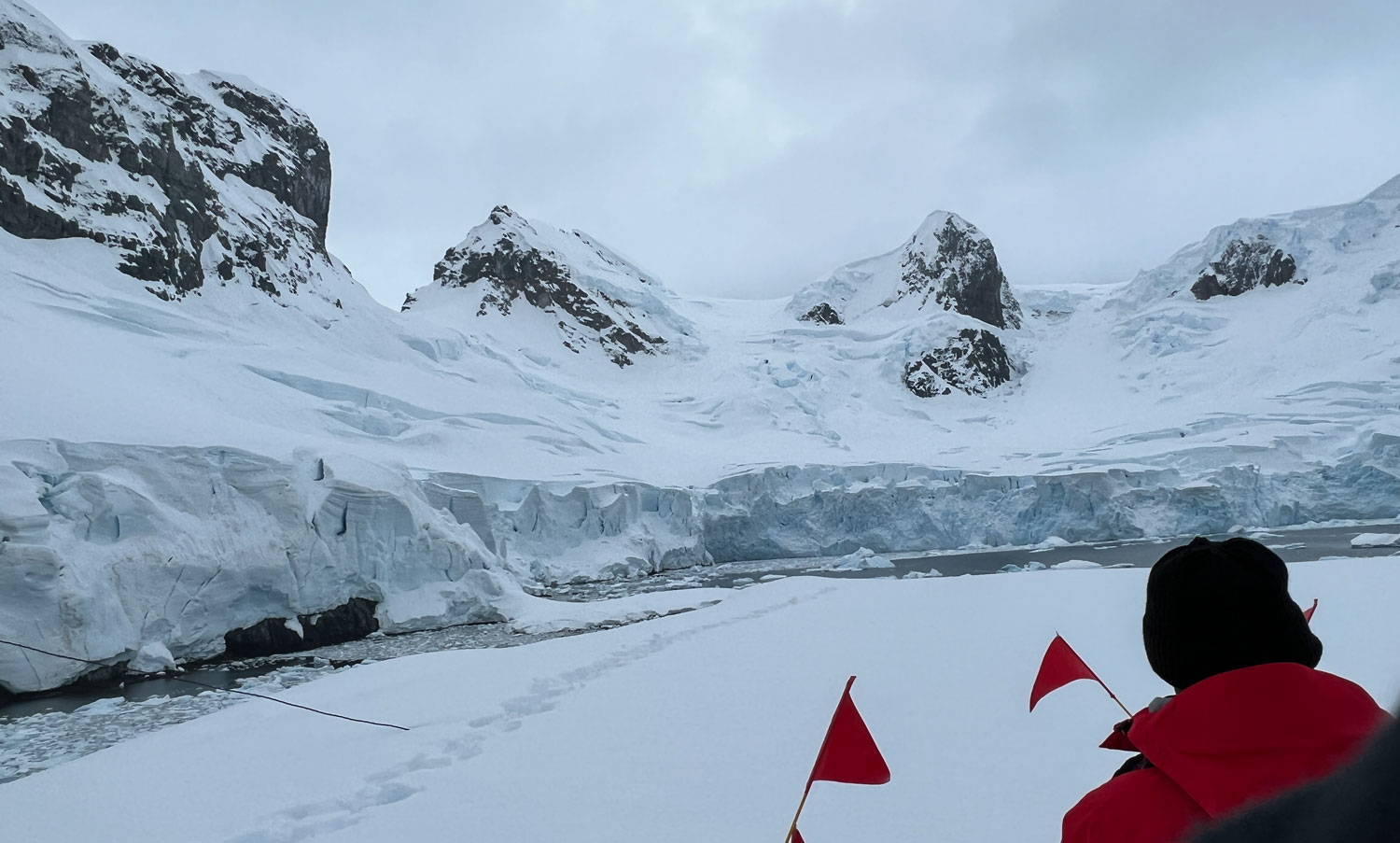
Some of the people from the cruise. Note the people on the right side of the photo making snow angels.
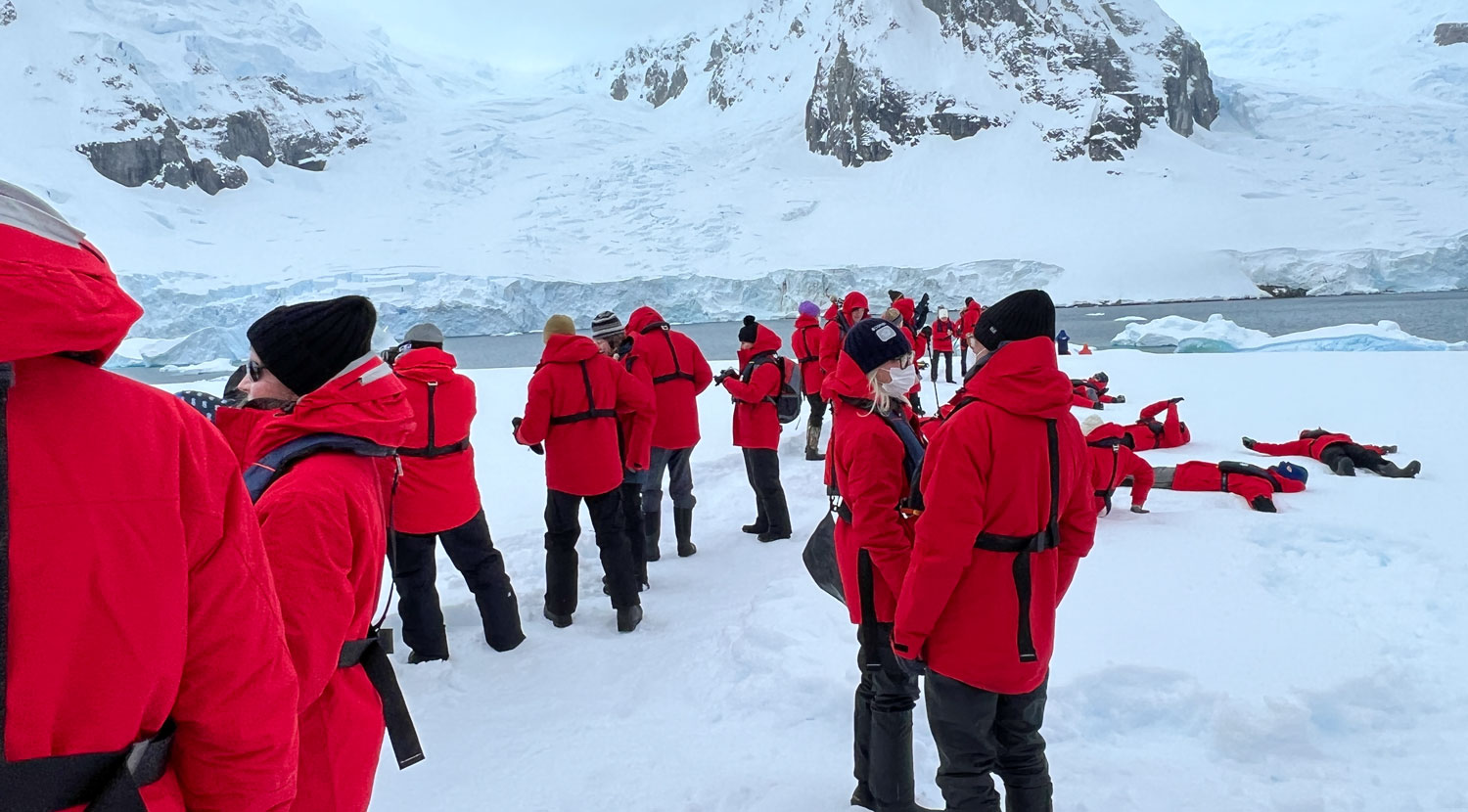
After we returned to the ship, we had lunch and the ship moved to Skontorp Cove, where we'll take a zodiac tour (no landing).
About 14:30 they called our group and we went down to the zodiac launch area on the third deck. The seas were not high but we had a lot of spray coming into the boat.
The first thing we encountered was the Argentine research station. It's normally operating in the summer but has been closed because of COVID.
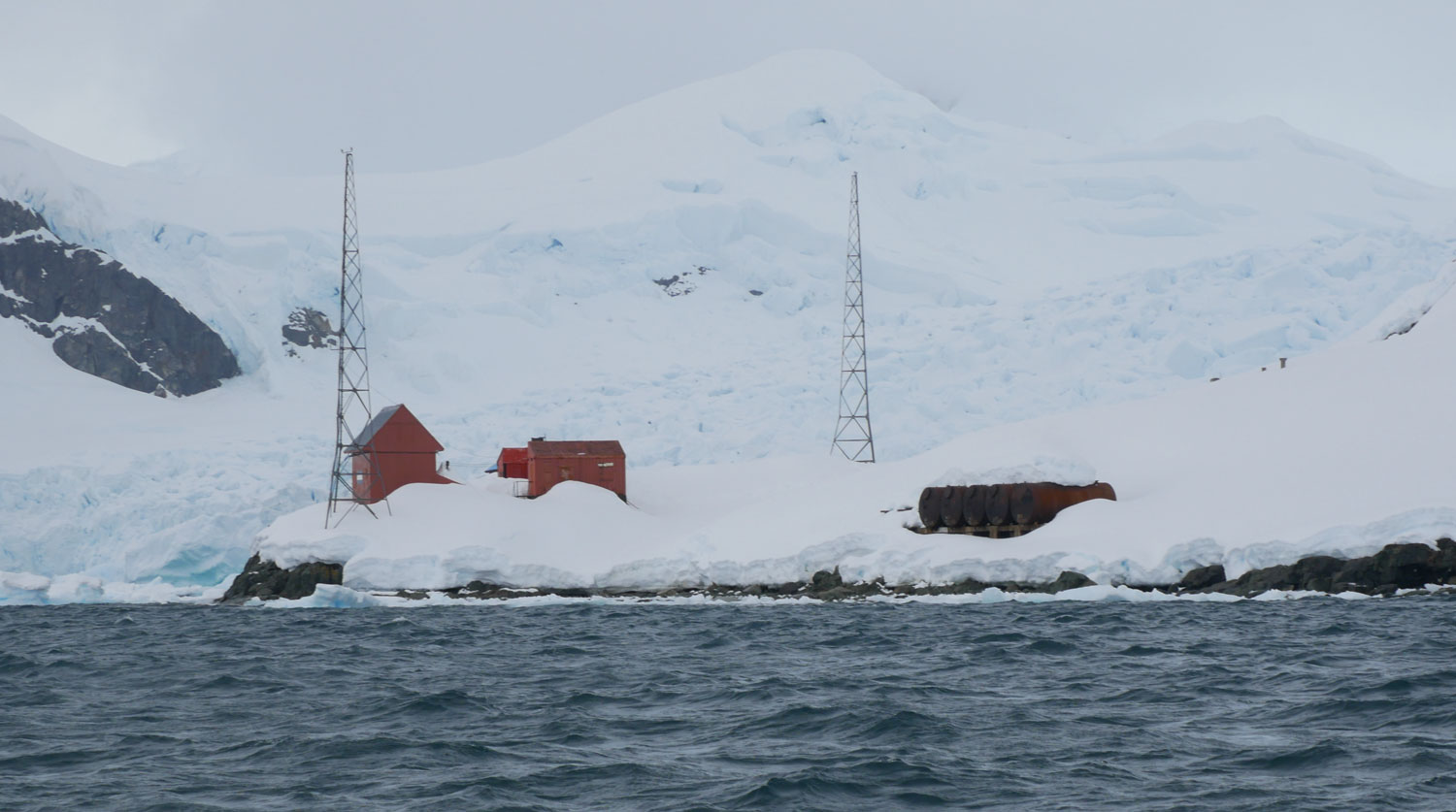
The penguins, however, have taken advantage of this closure. You can see in this next picture that they have a "penguin highway" into the facility. I wouldn't be surprised if they have some nests around the structures, if there is any dry rocky ground.

As soon as we left the research station, we came upon a zodiac that had run aground. The zodiac driver had tried everything except throwing a few people over the side to lighten it, and still was stuck. Our driver tried to get near enough to help, but we would have been grounded too.
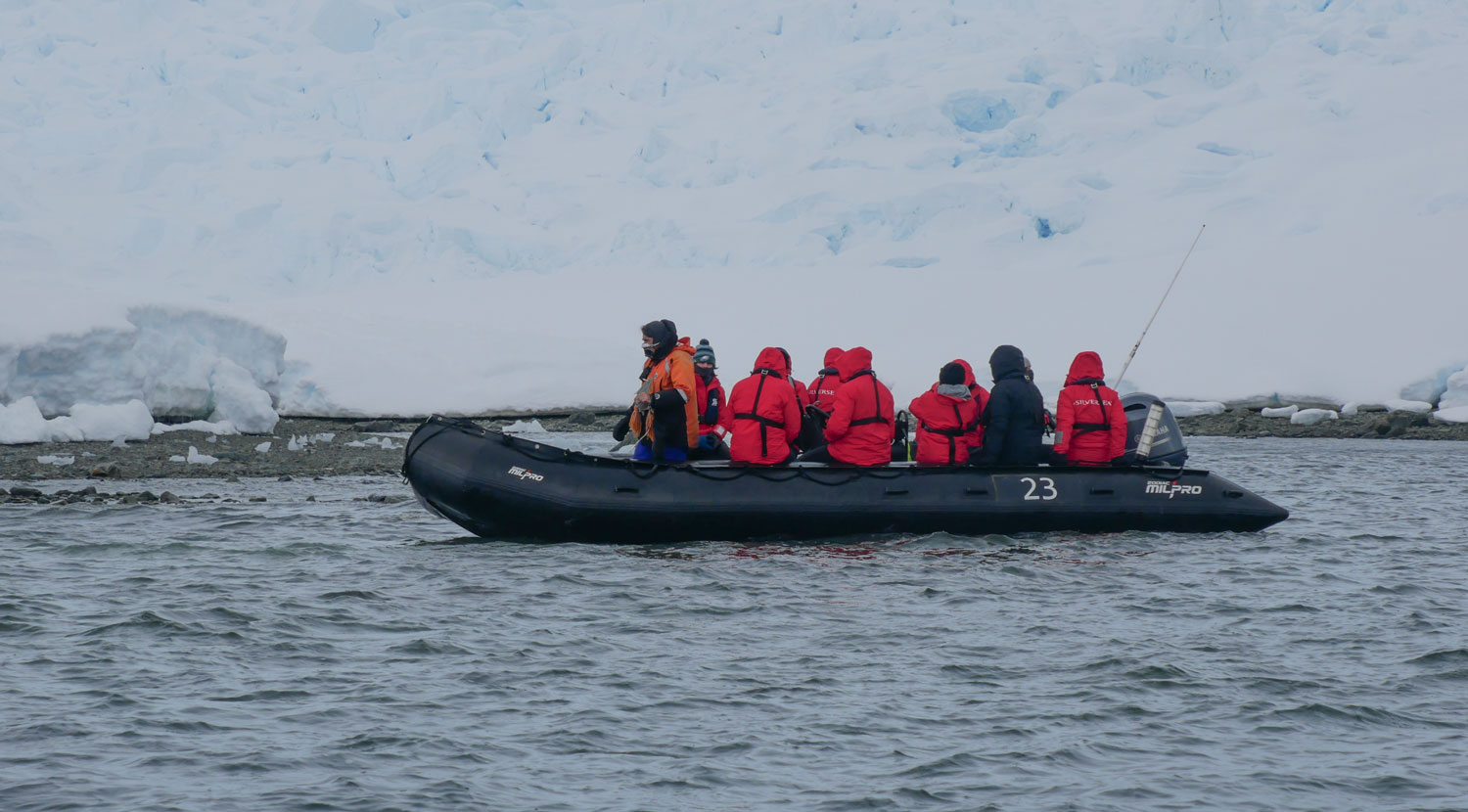
A lightly loaded zodiac came to help.

They were able to throw a line across to pull the zodiac free.
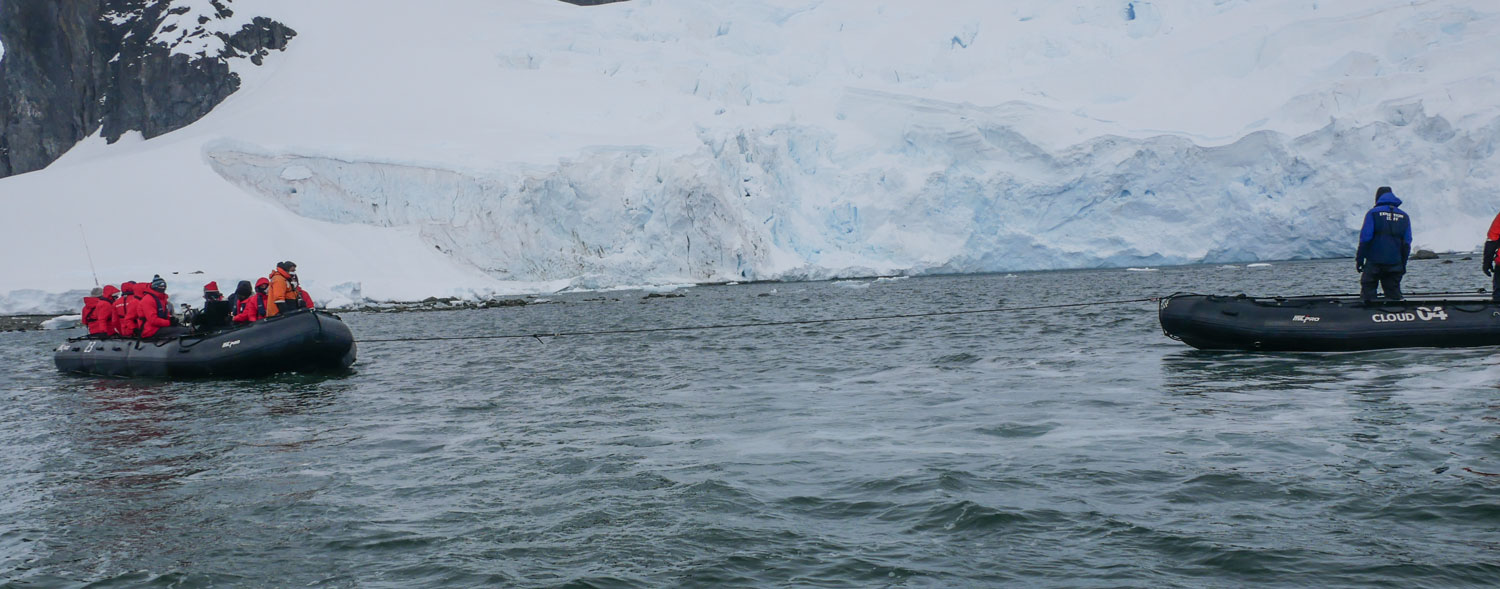
Here's a snow covered mountain nearby. Actually, it's impossible to judge distances by sight, because the landscape is so massive.

We approached this rock outcropping. The variety of colors showed a lively habitat for moss and lichen.
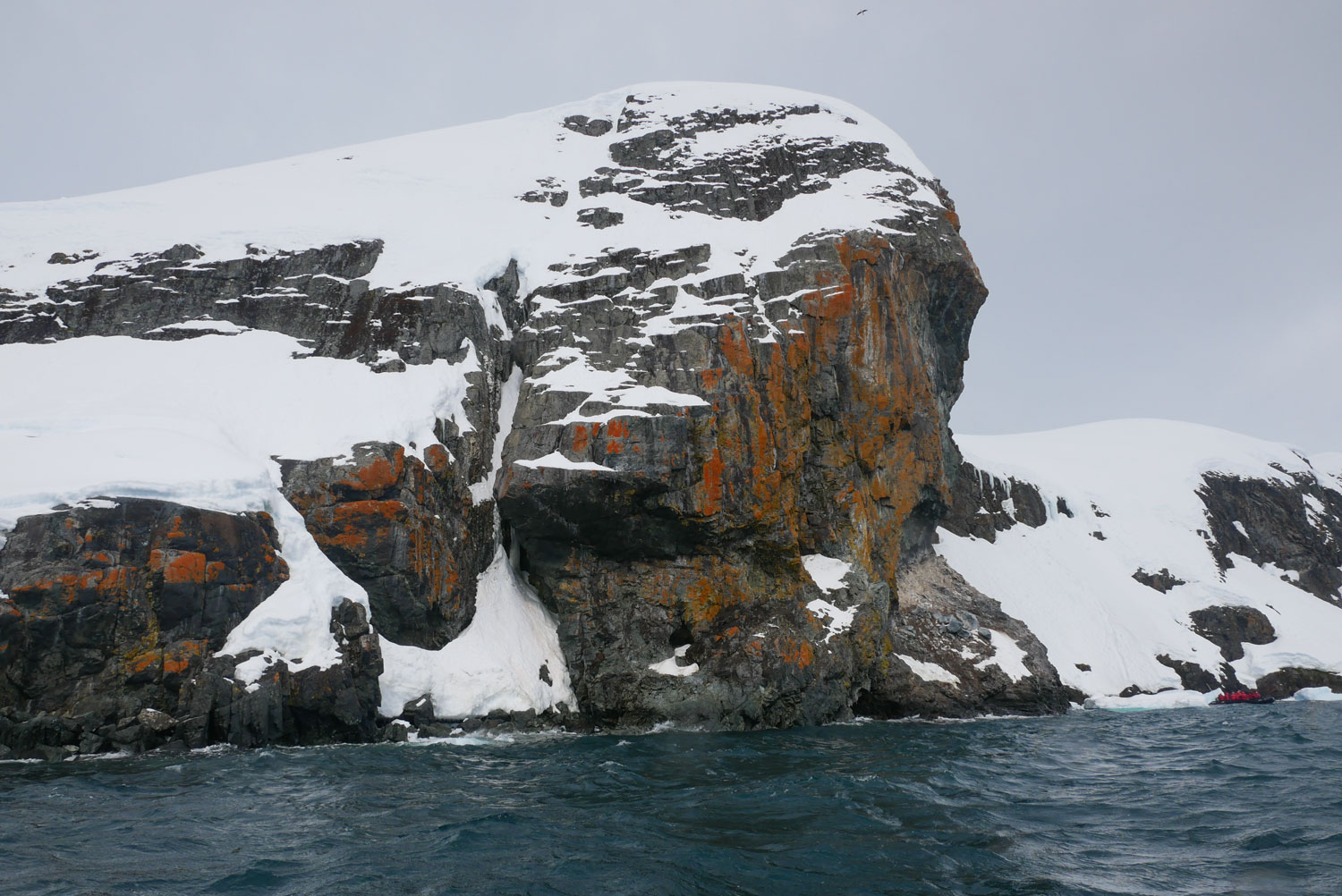
There are cormorants nesting on the rock face.

The Suárez Glacier feeds down into the cove, and is a good example of a tidal glacier, which feeds directly into the water.
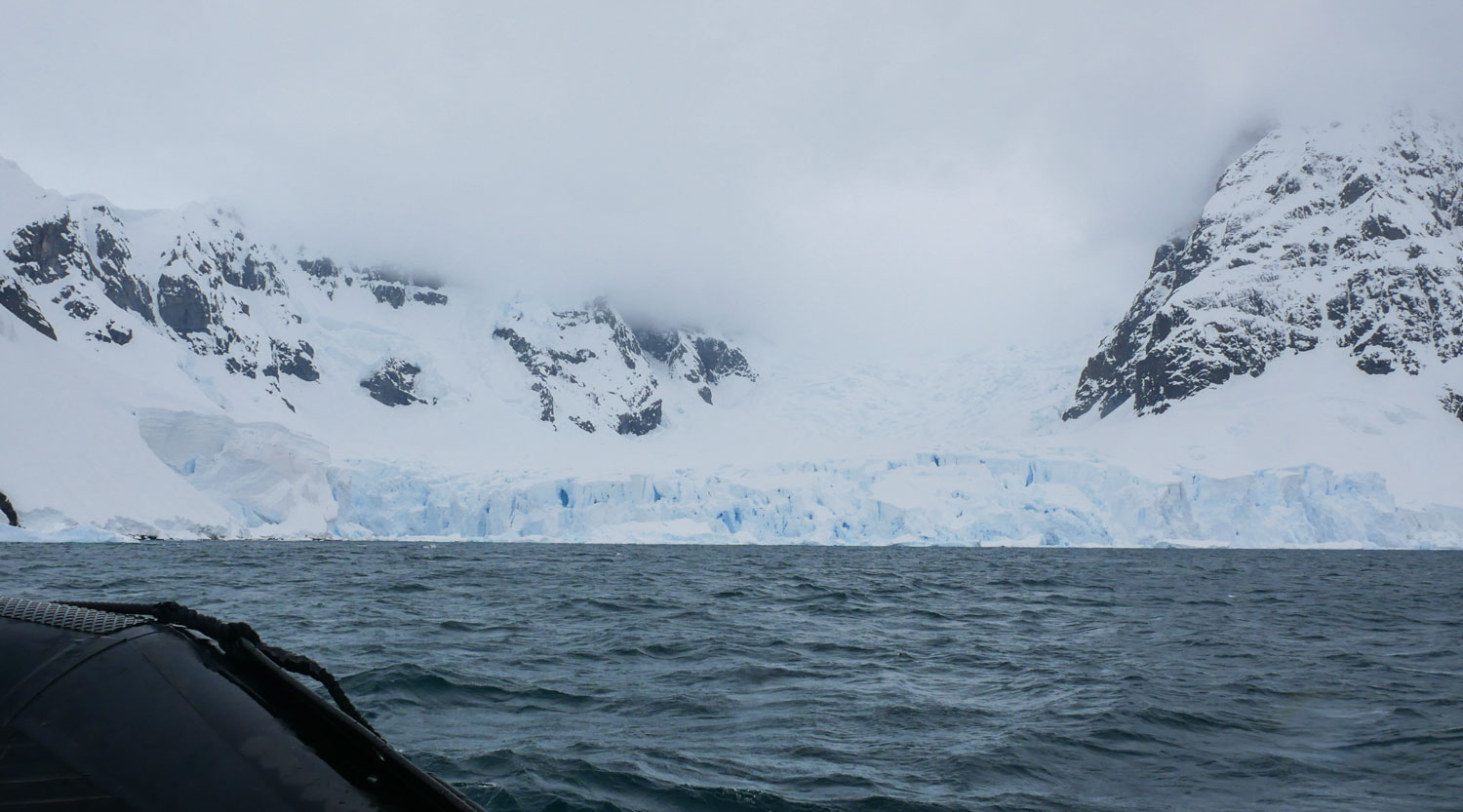
As we were heading back to the ship we came upon an iceberg that had calved from the glacier.
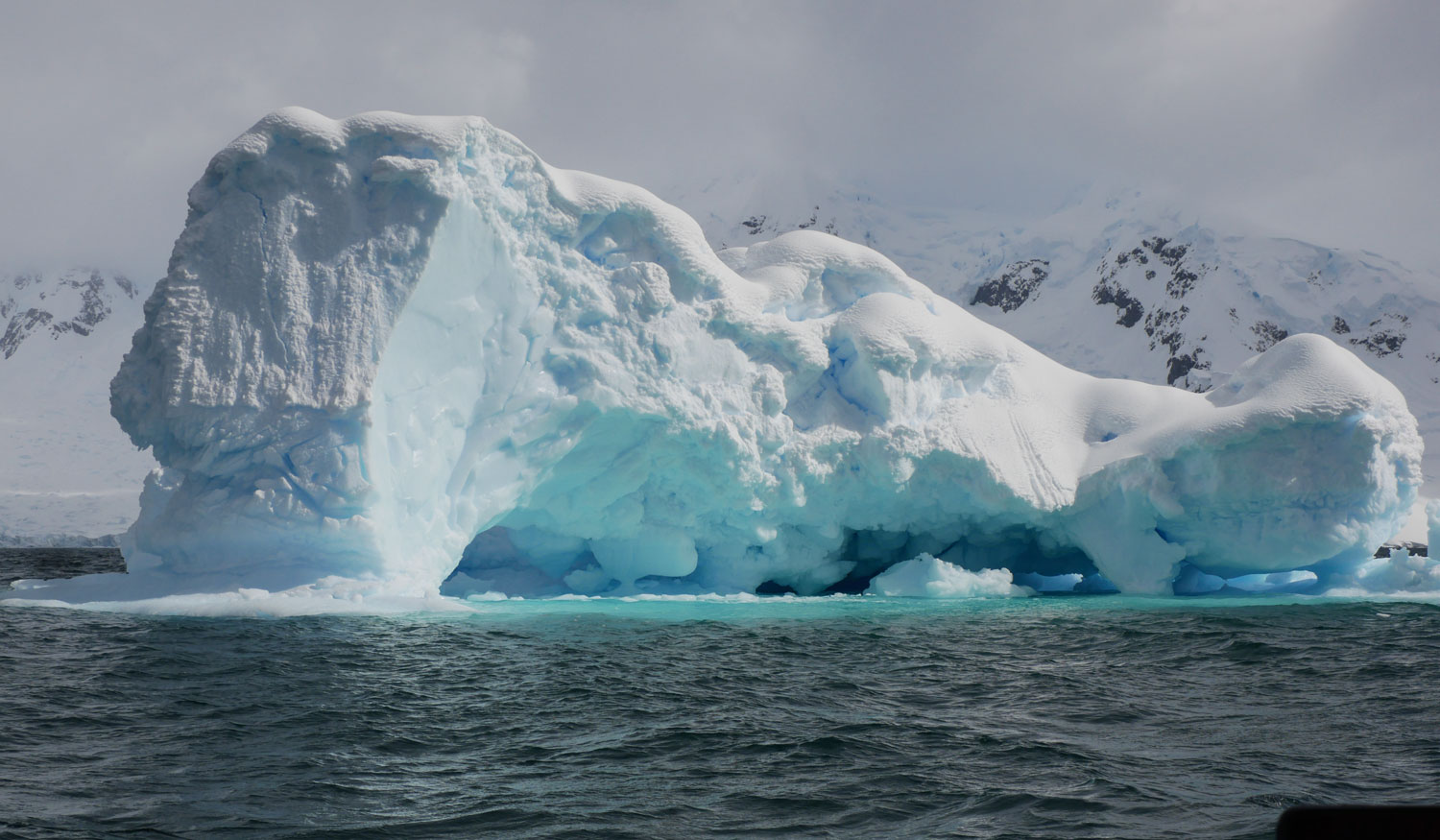
While the sea wasn't that rough, we had a lot of spray that came into the zodiac each time it hit a swell. Janet was at the front of the zodiac and took the brunt of it.

It actually was not that enjoyable an excursion. There wasn't that much to see, and the cold spray made things uncomfortable, especially for those in the front of the zodiac.
After dinner, from about 21:15 to 23:00, the ship sailed through Neumayer Channel, which has some amazing terrain. It was a special treat to see some color in the sky, after several grey days, and the setting sun helped give contrast. At this latitude the sun sets around 23:00, but it never gets really dark. It would be possible to read the newspaper outside at midnight. Judy and Janet went to the Observation Lounge at the front of the ship and took pictures. Here are a few.

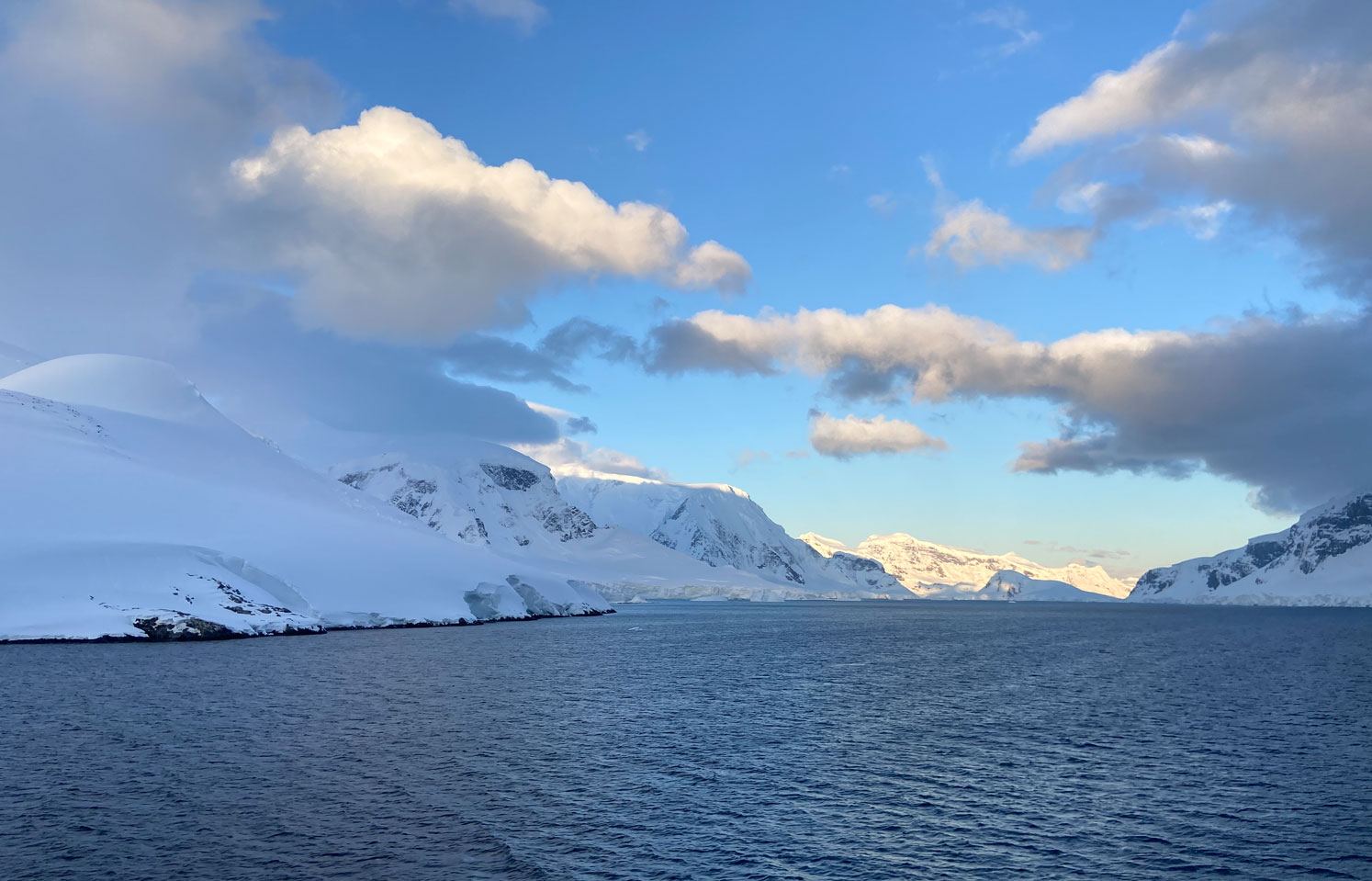

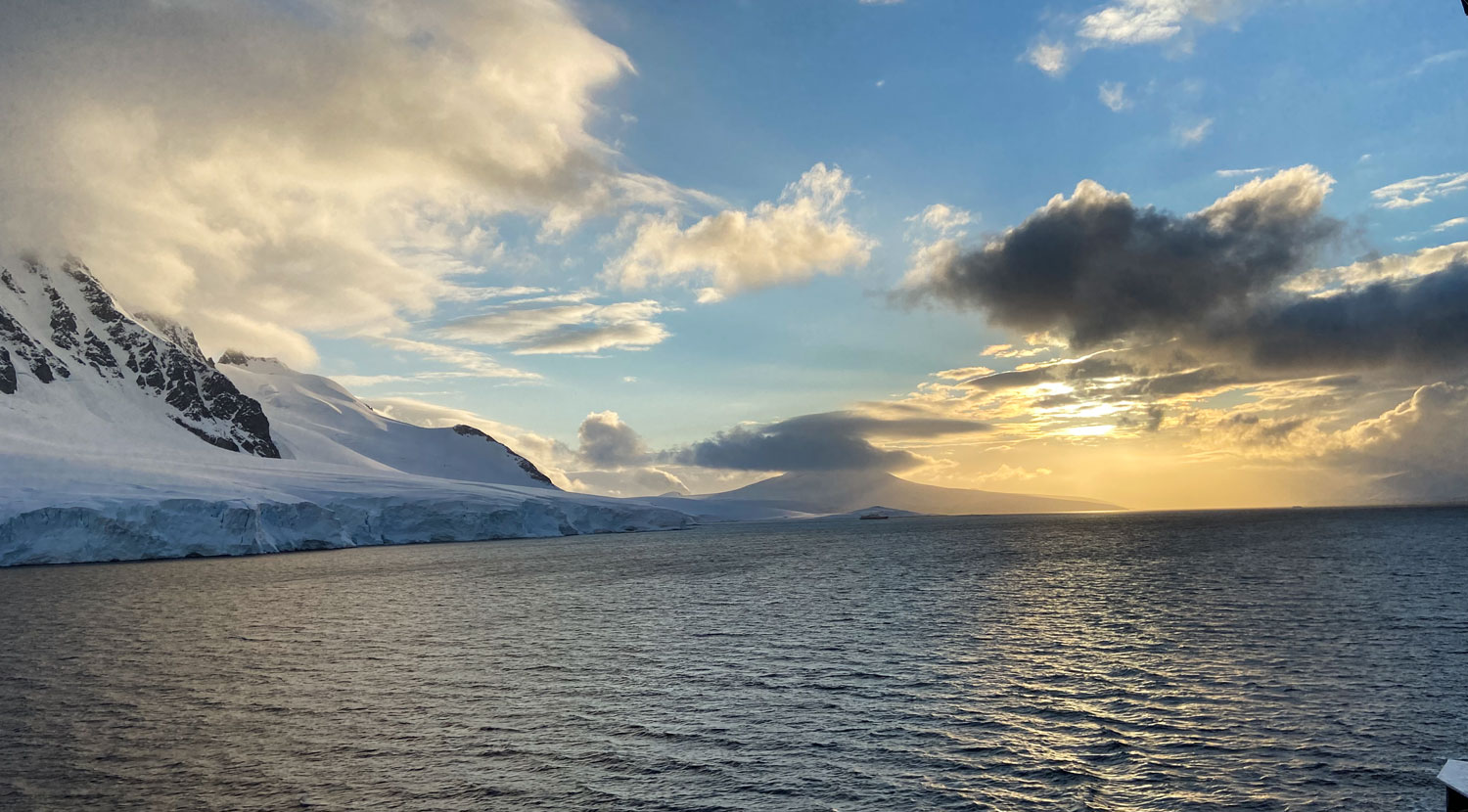
That was the end of the day for us.